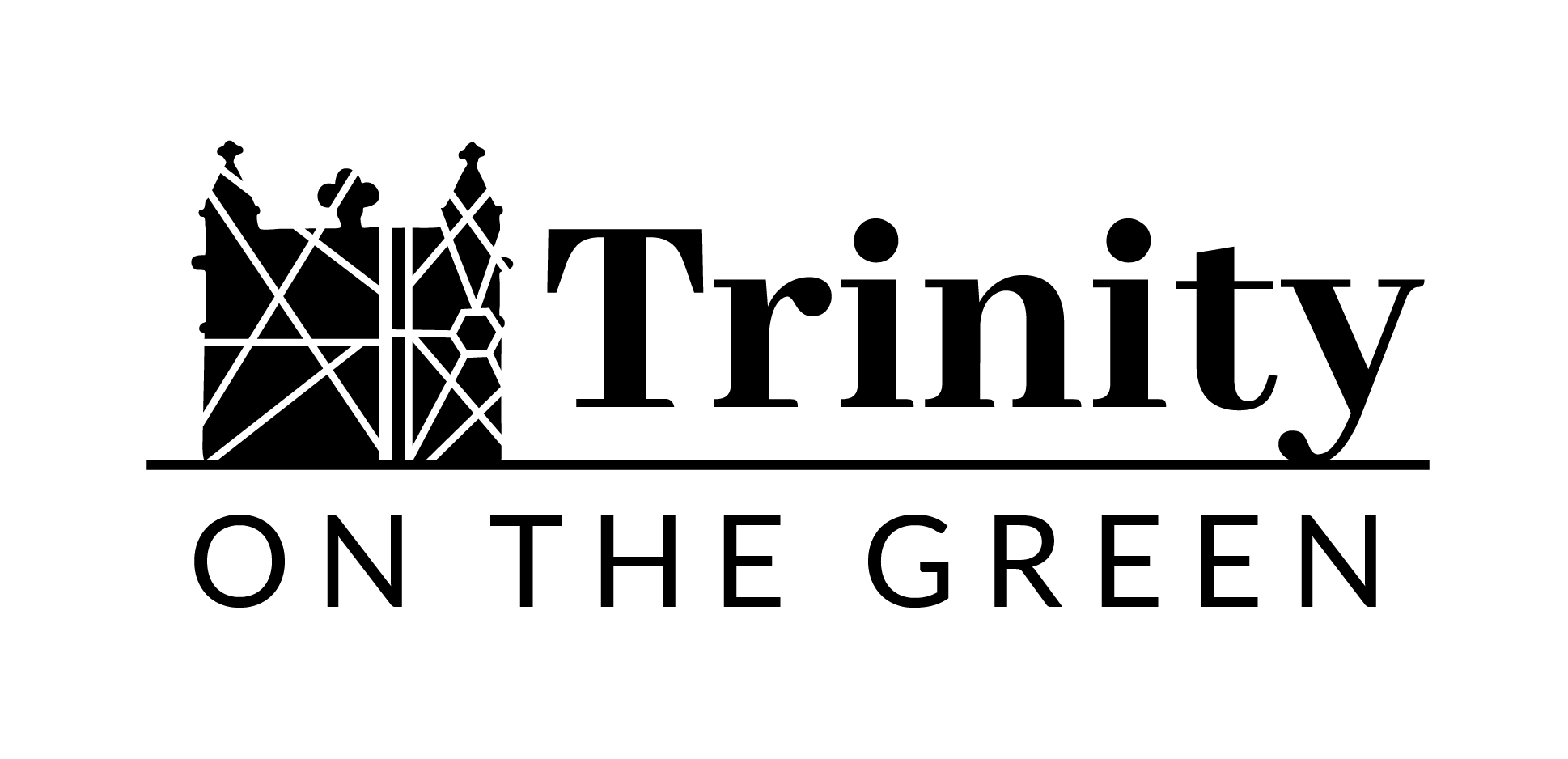Windows on Heaven
Stained Glass at Trinity
At once art pieces, displays of community investment, and tools for teaching the Gospel, stained glass windows are a hallmark of Christian churches throughout the world, and Trinity on the Green is uniquely blessed in the variety and quality of its windows. Ranging from the comparatively staid geometry of its earliest Grisaille-style windows to opulent liturgical confections by Tiffany & Co. and on to both neo-medieval and modernist designs of the 20th century, Trinity’s windows tell the whole history of stained glass in miniature and bring light and color to our worship. The below descriptions are deeply indebted to our parish’s commitment to historical research, in particular the work of Edward Getlein, Neil Olsen, Ray Chappell, and Joe Dzeda. For a more general overview of stained glass, we recommend reading this excellent piece by The Stained Glass Association of America.
The Trinity Window
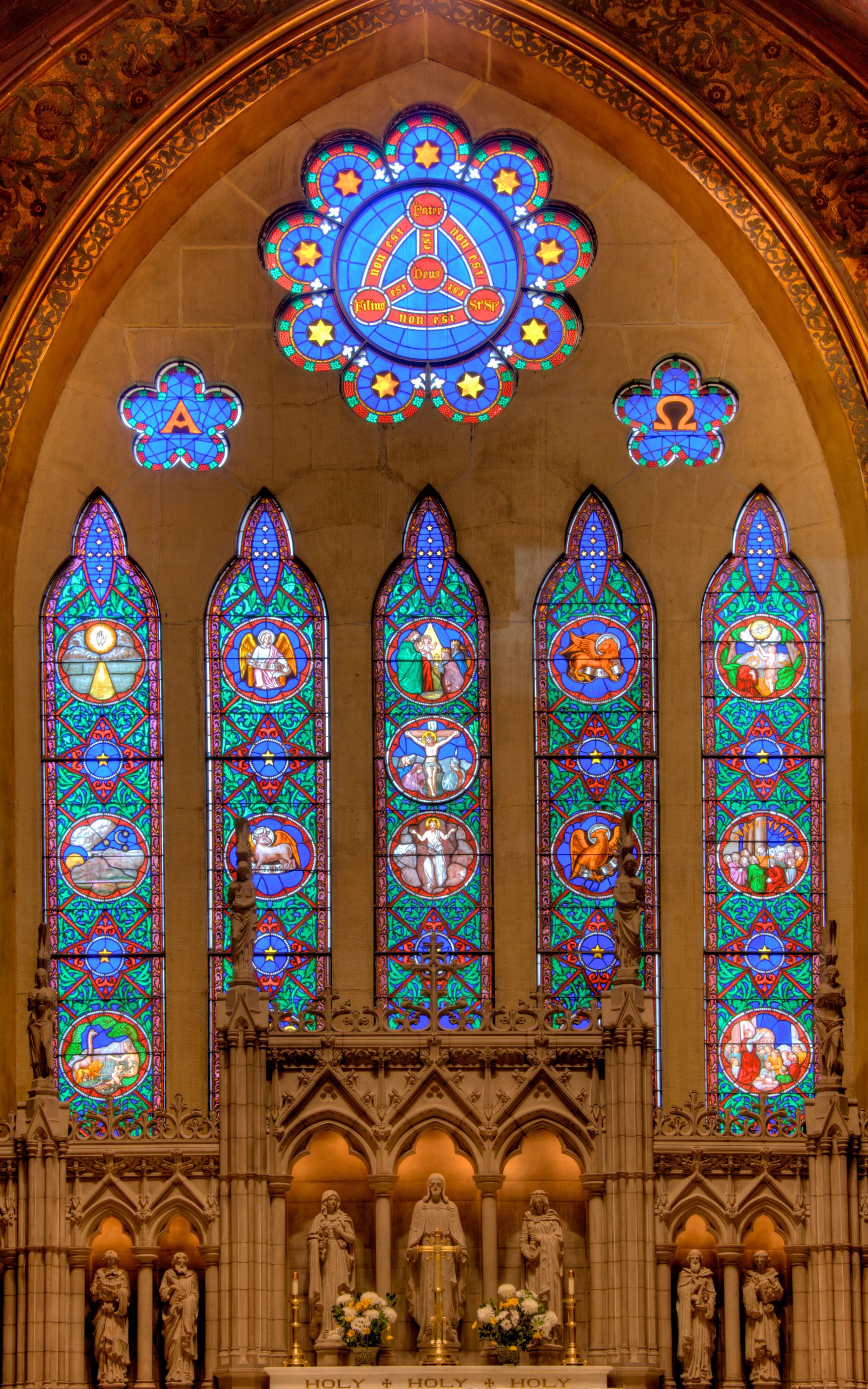
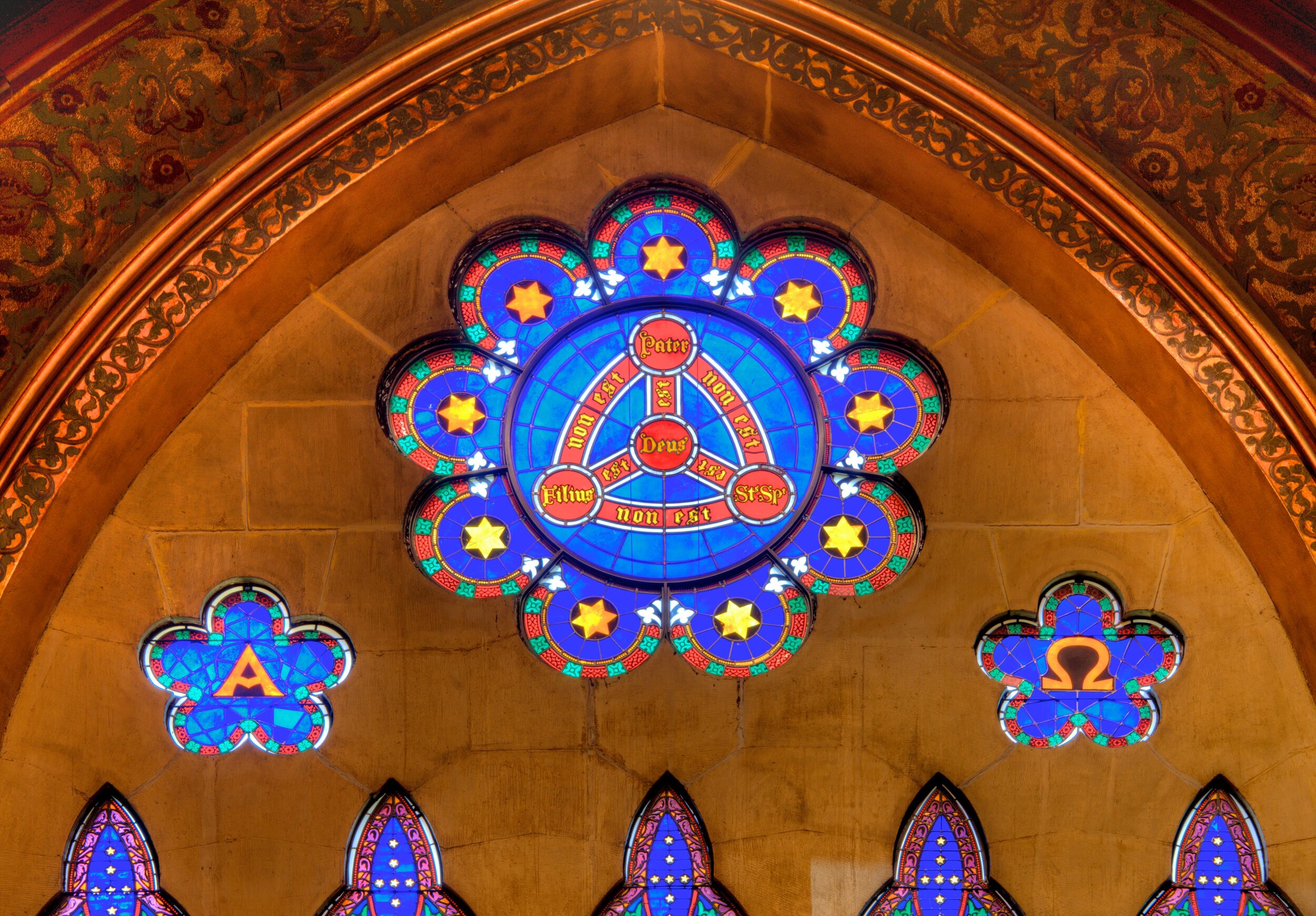
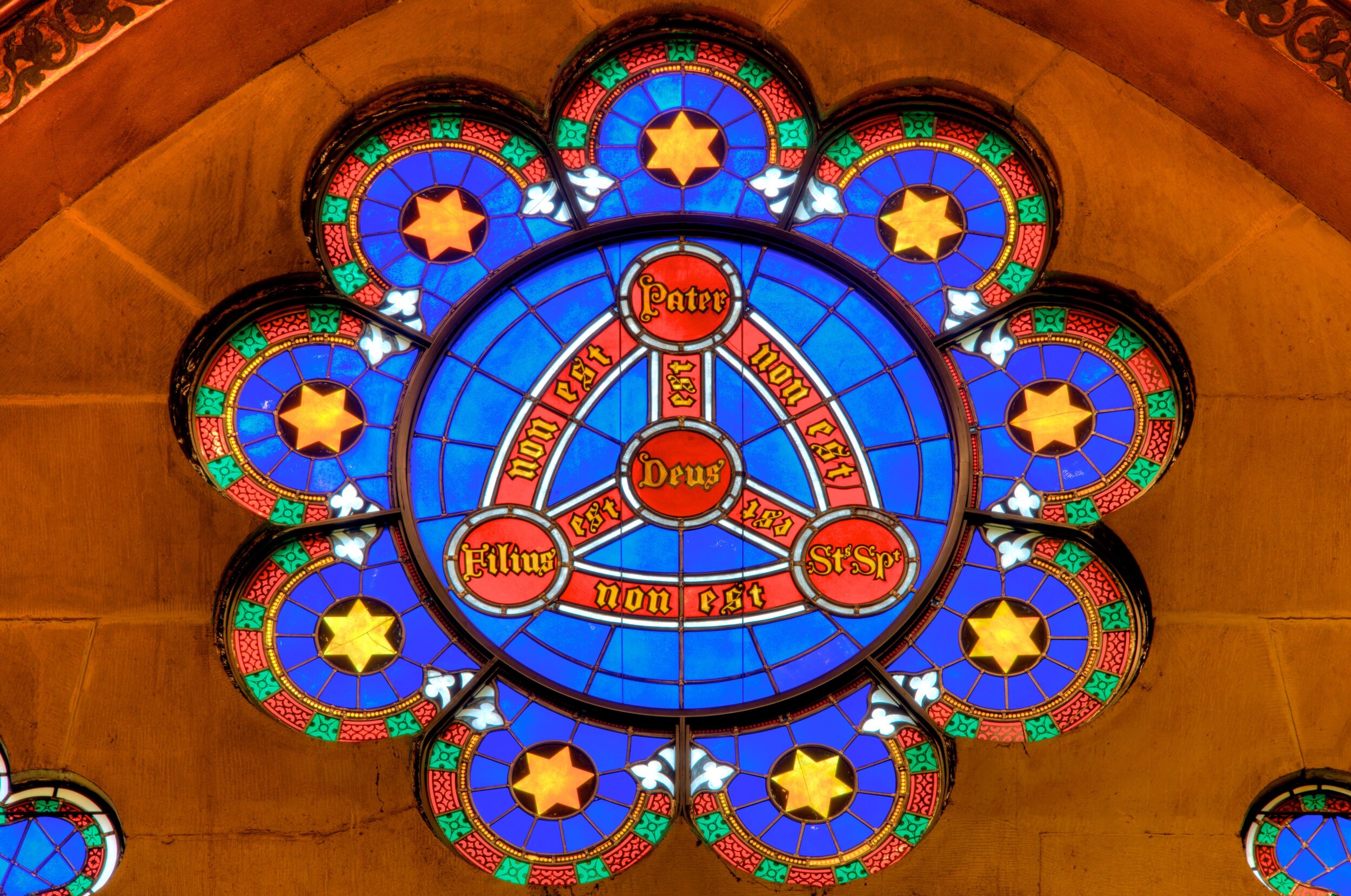
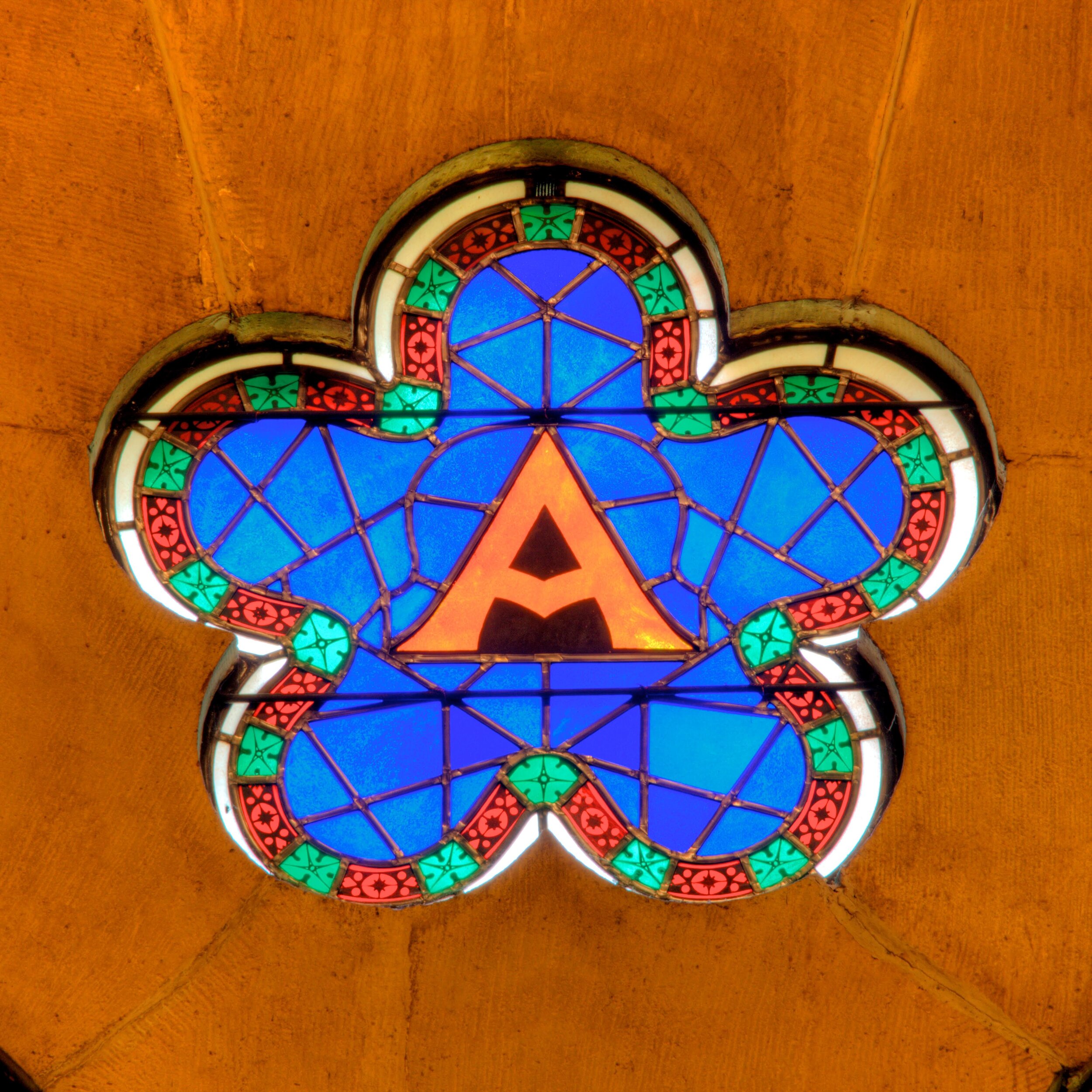
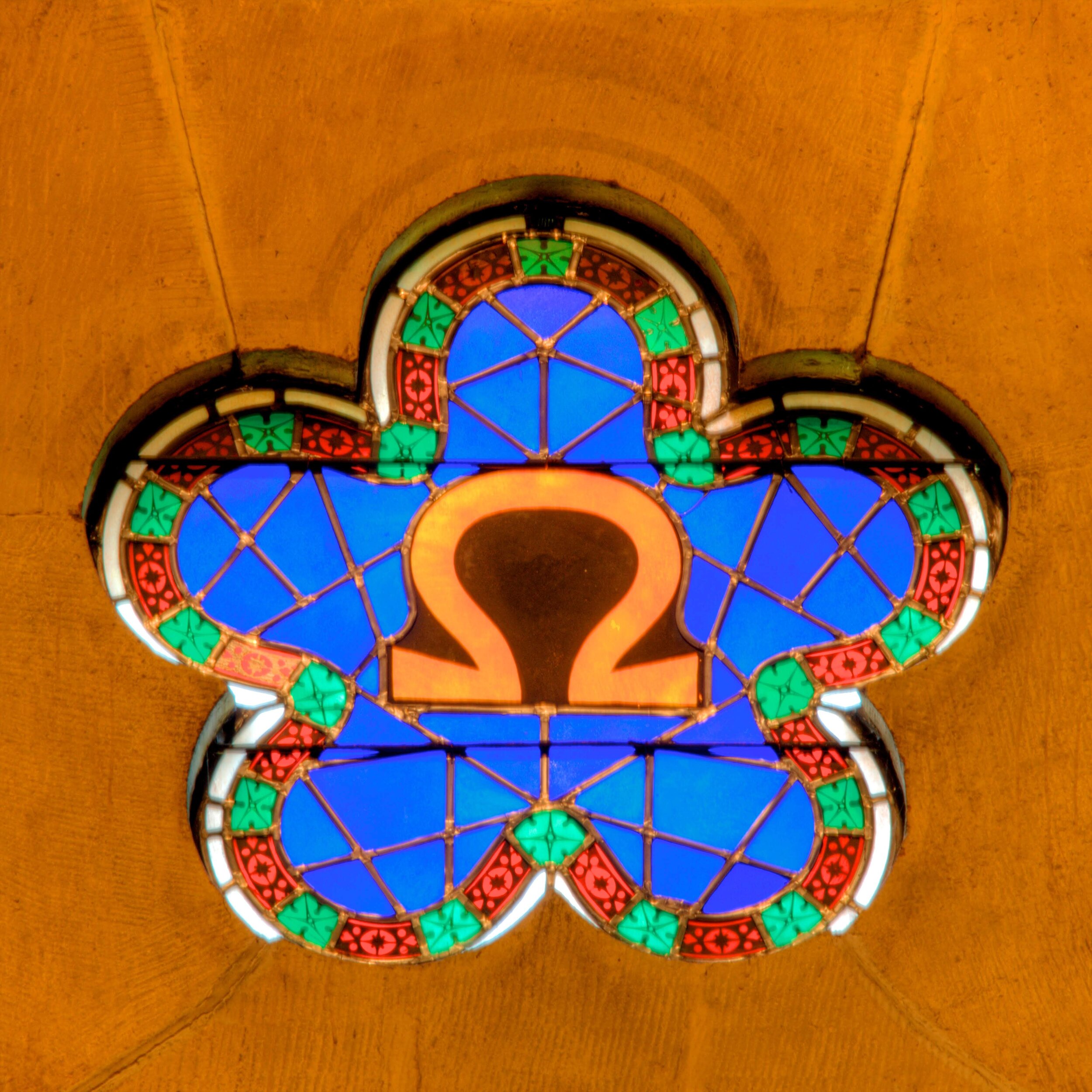
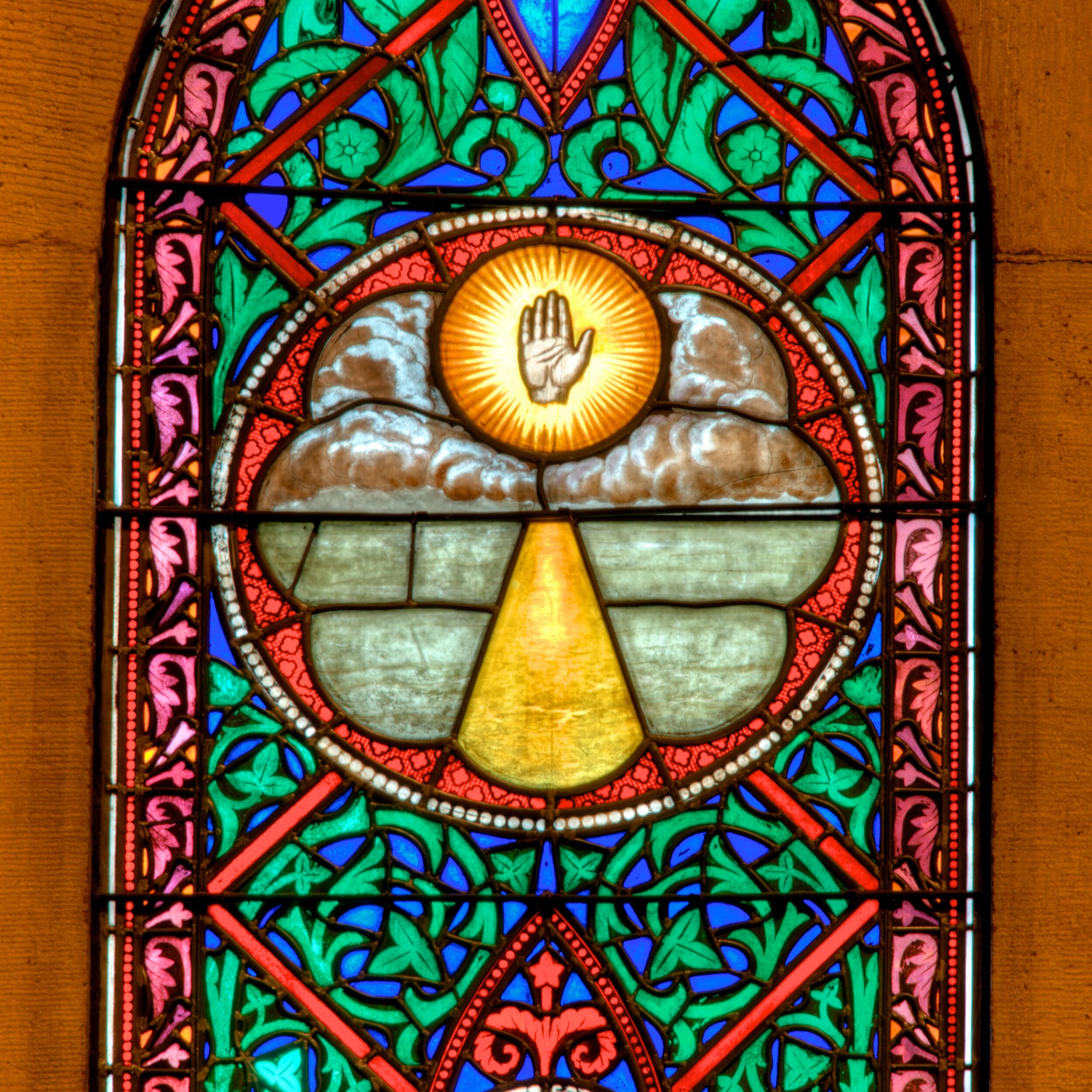
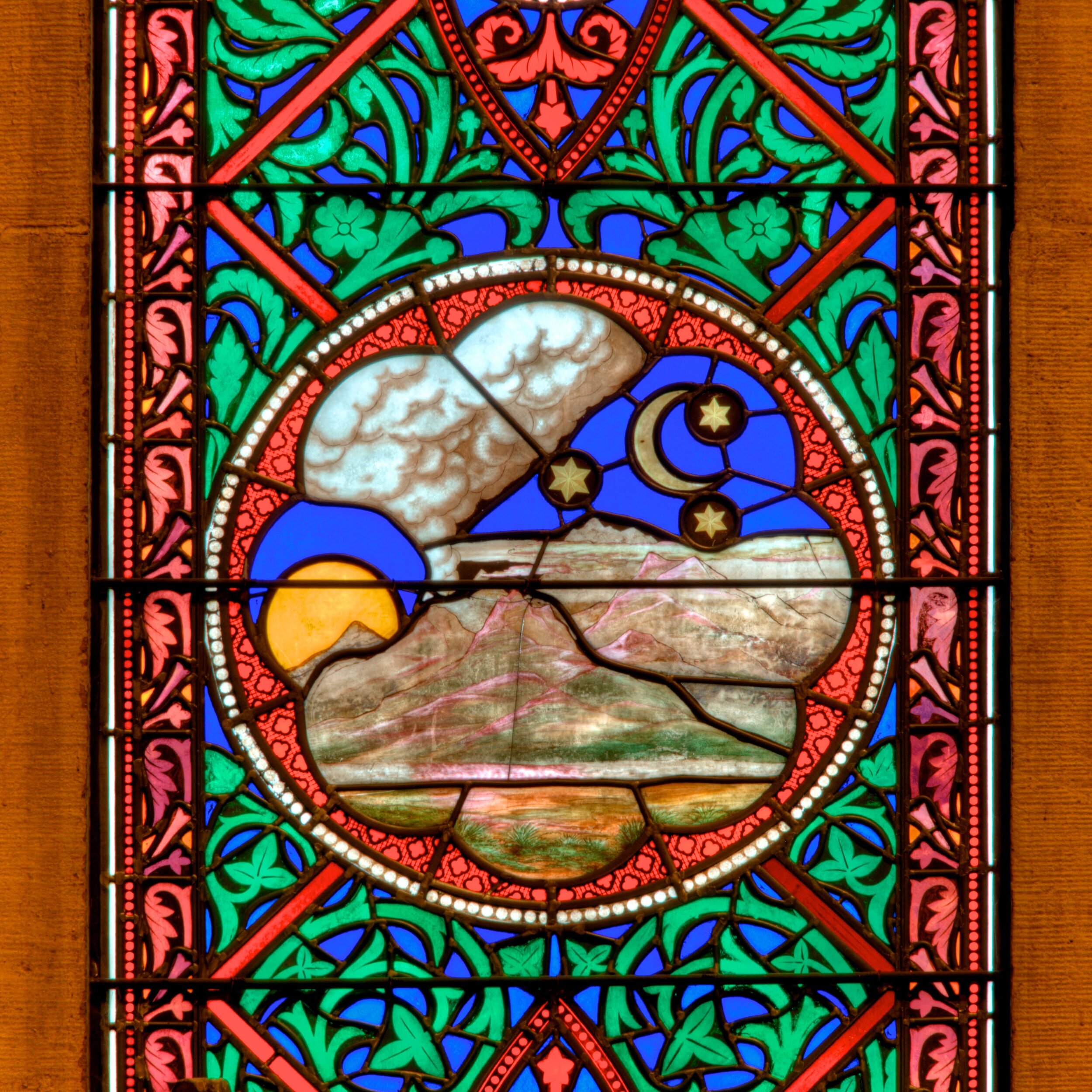

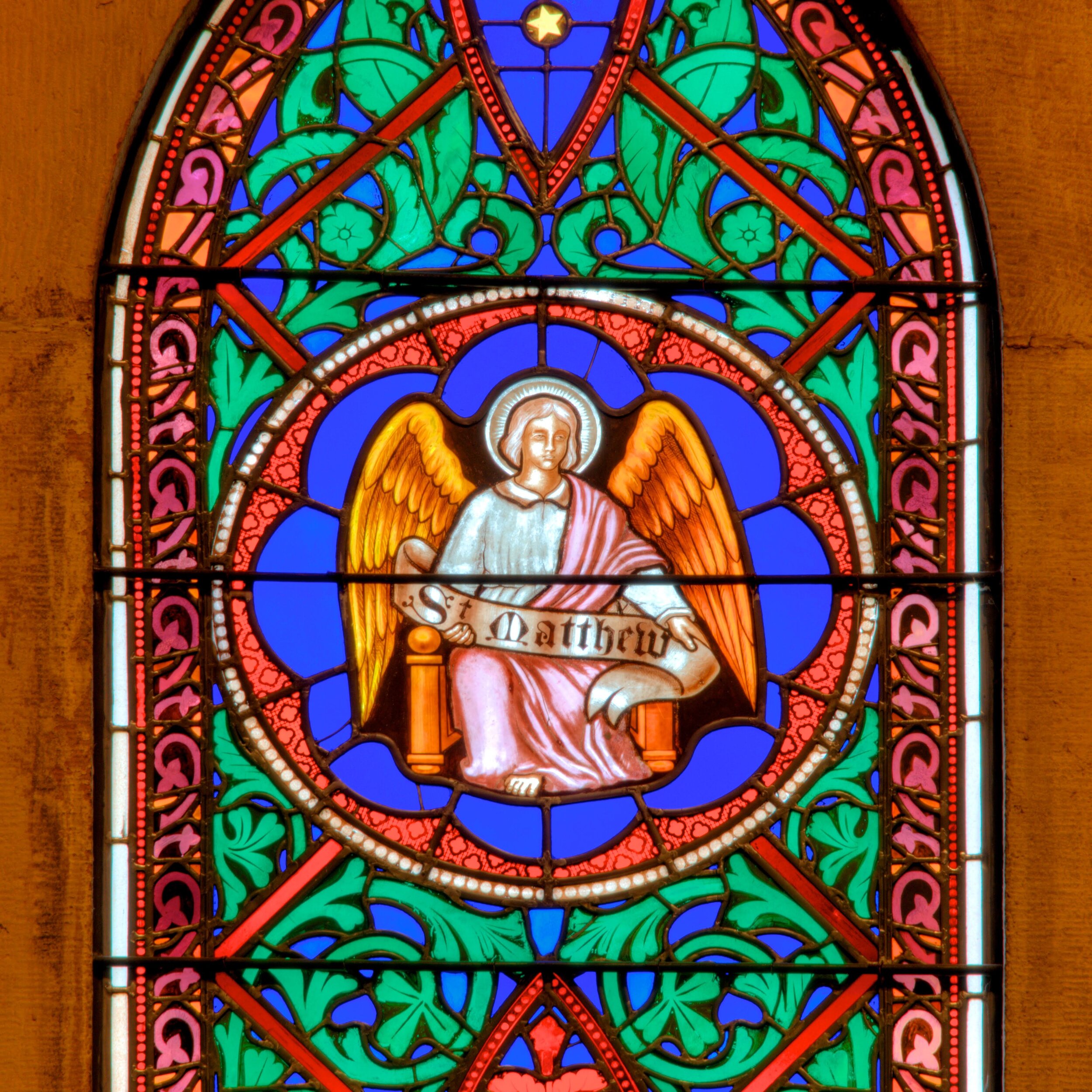
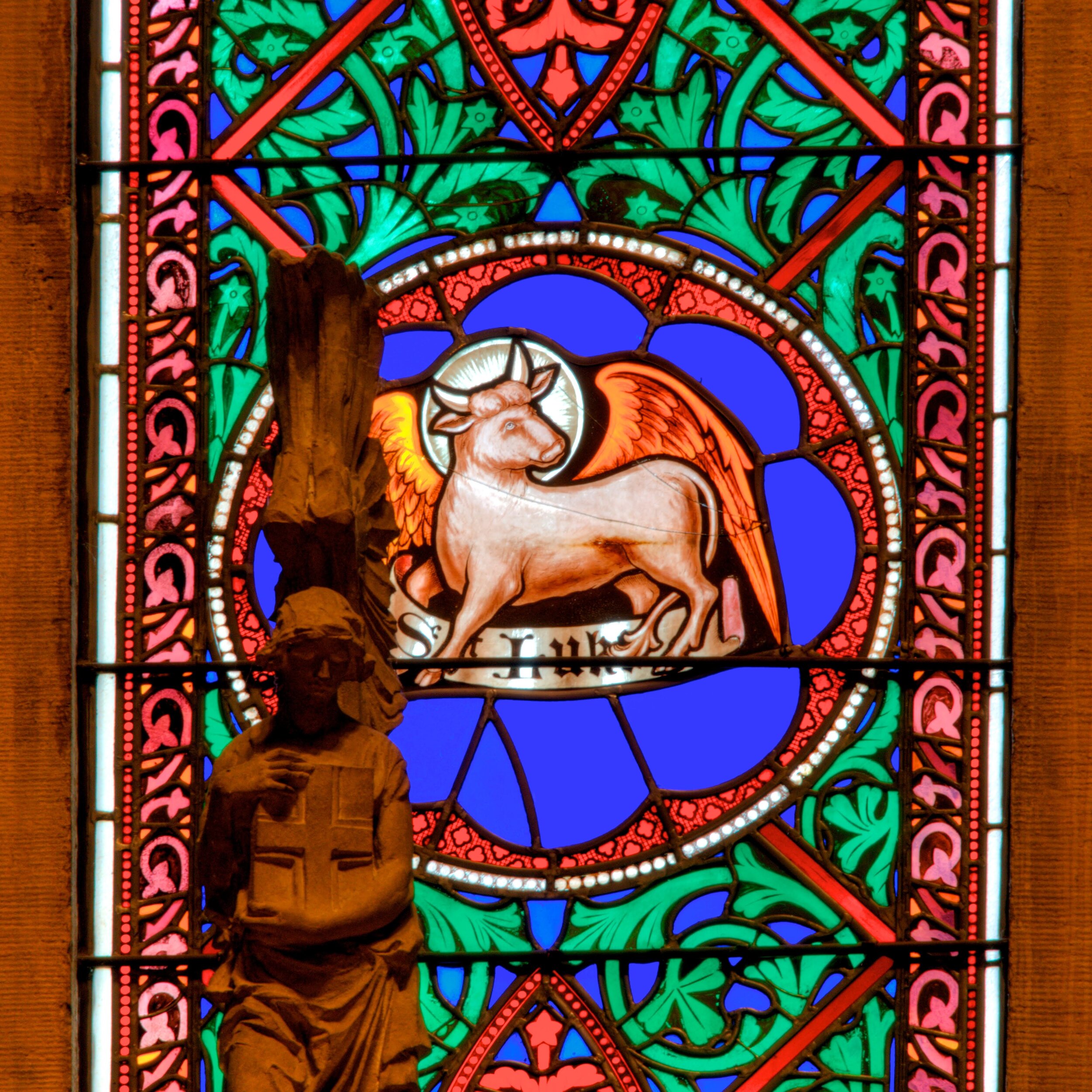
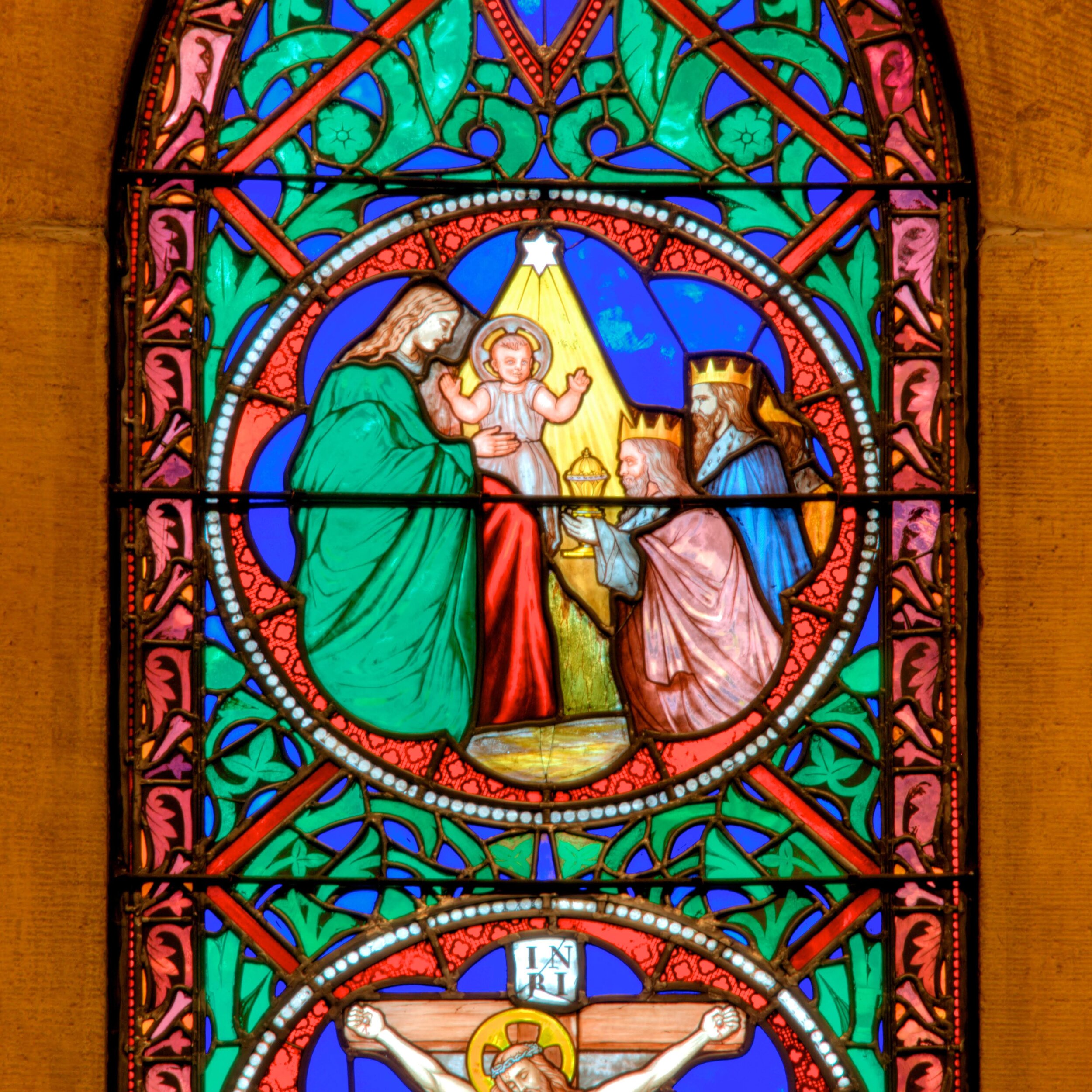
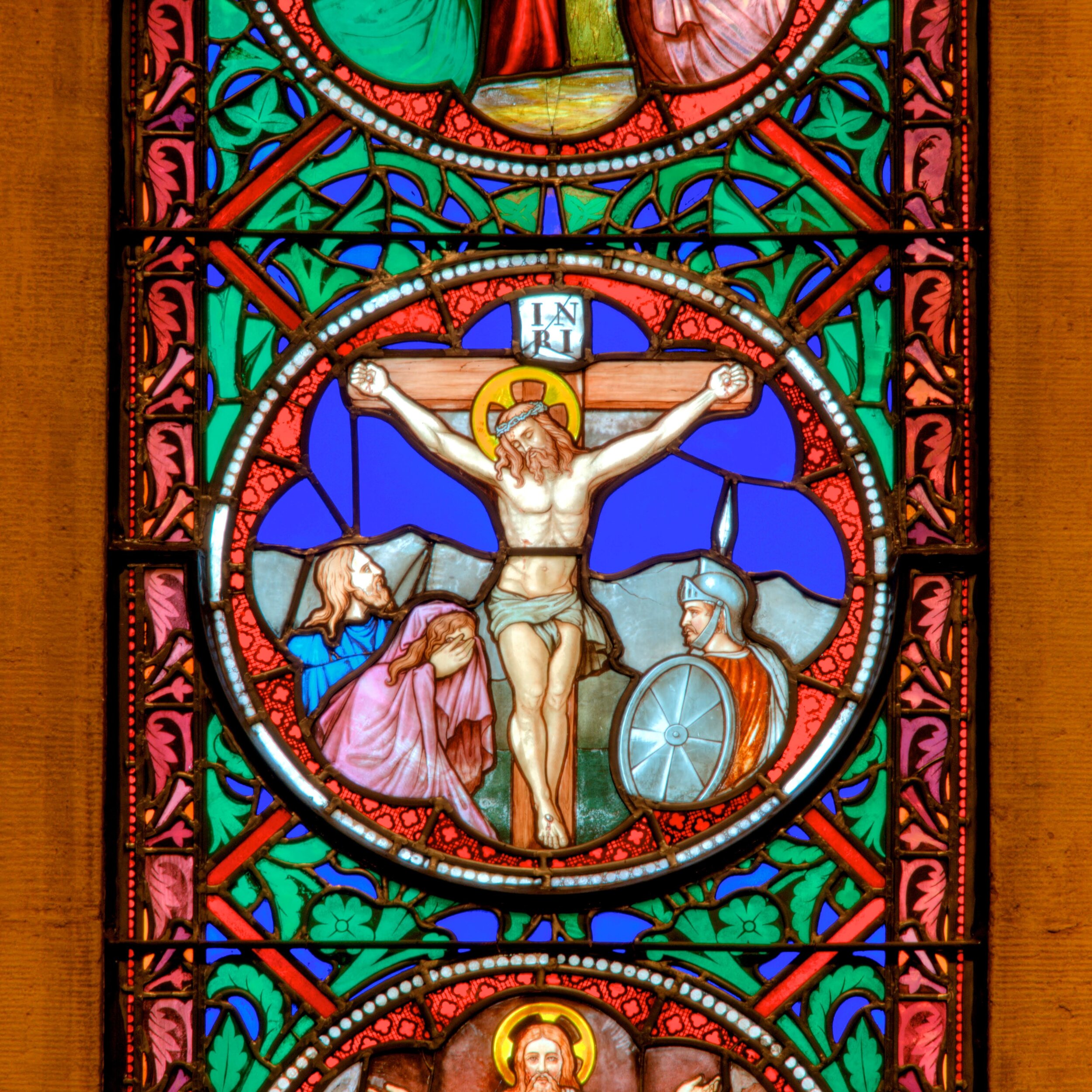
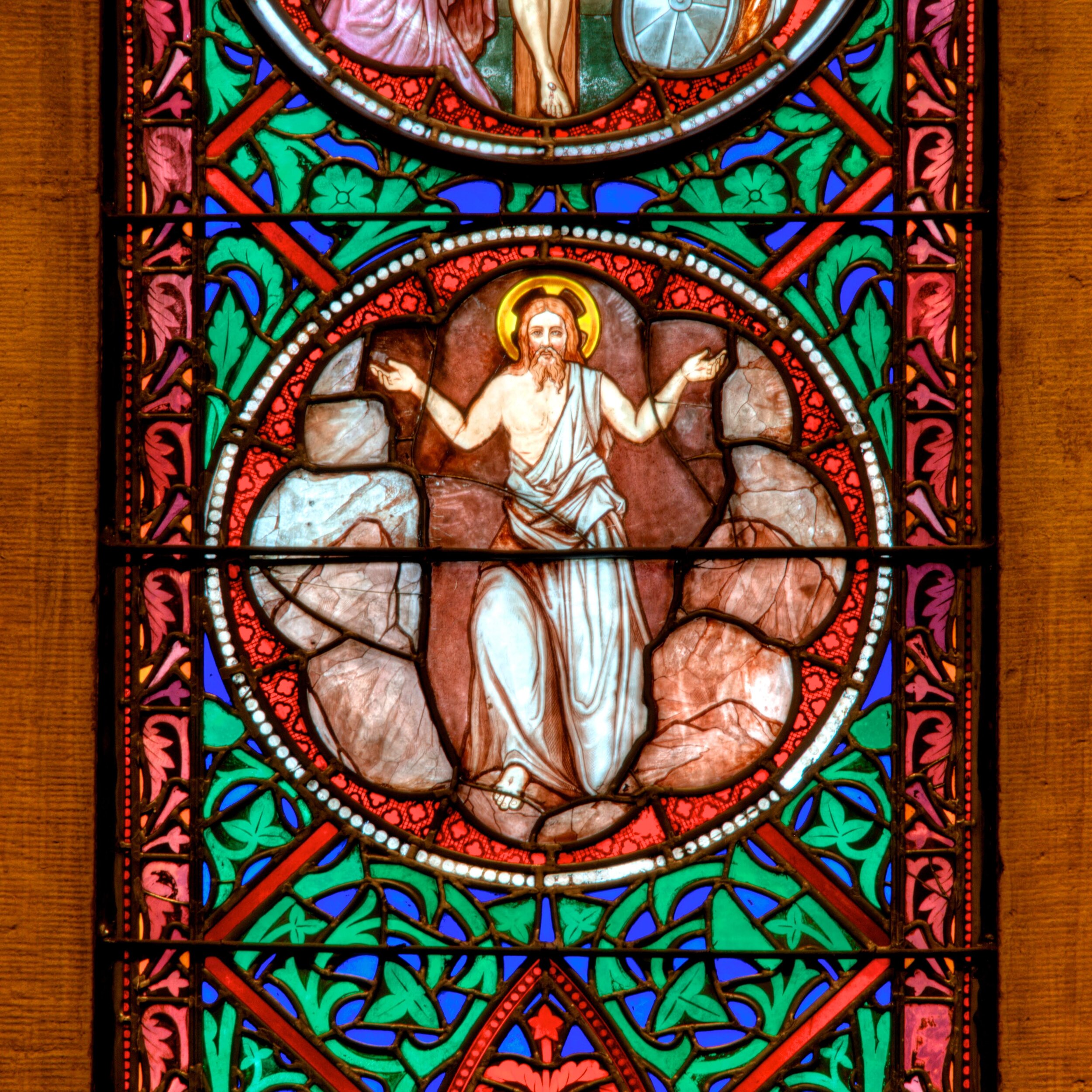

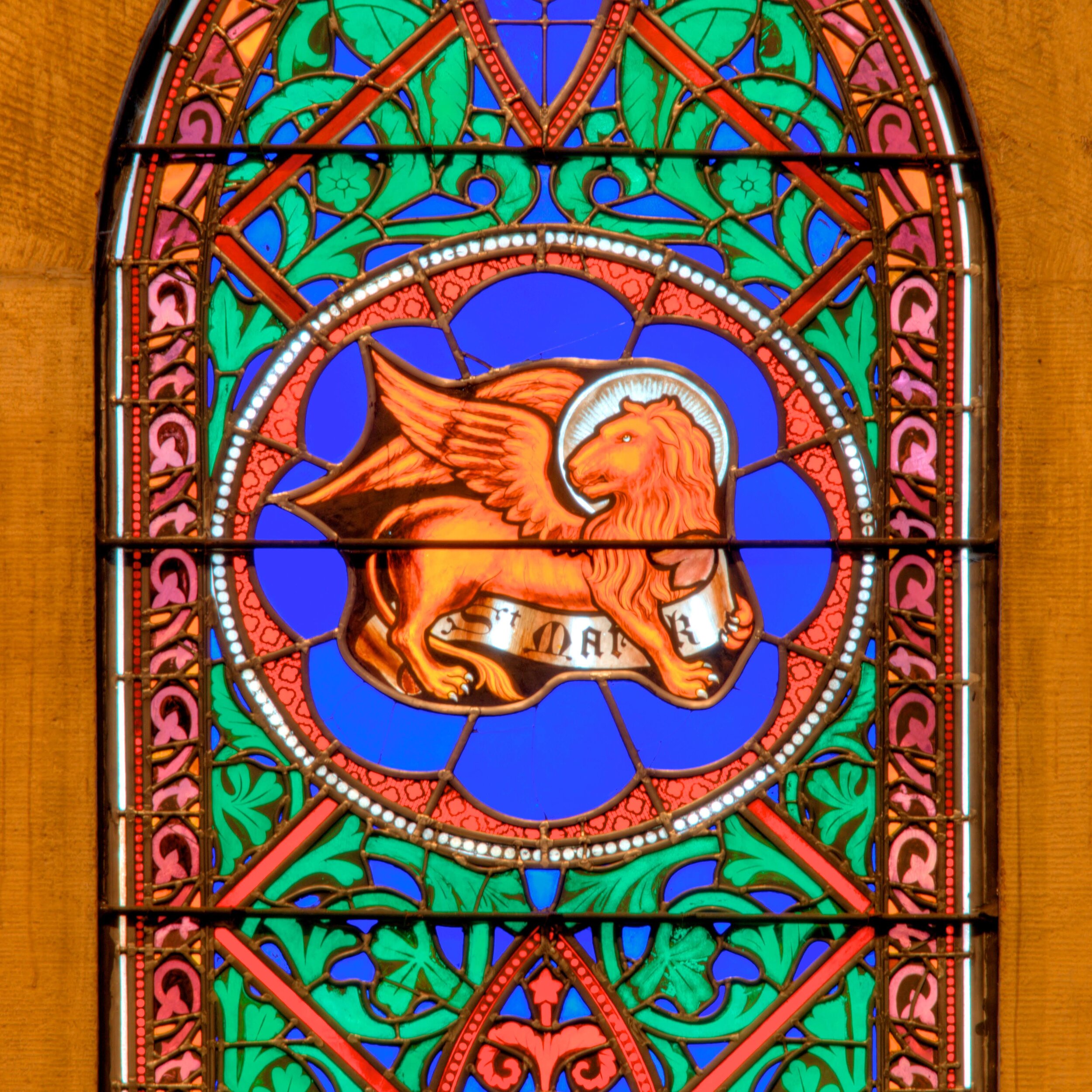
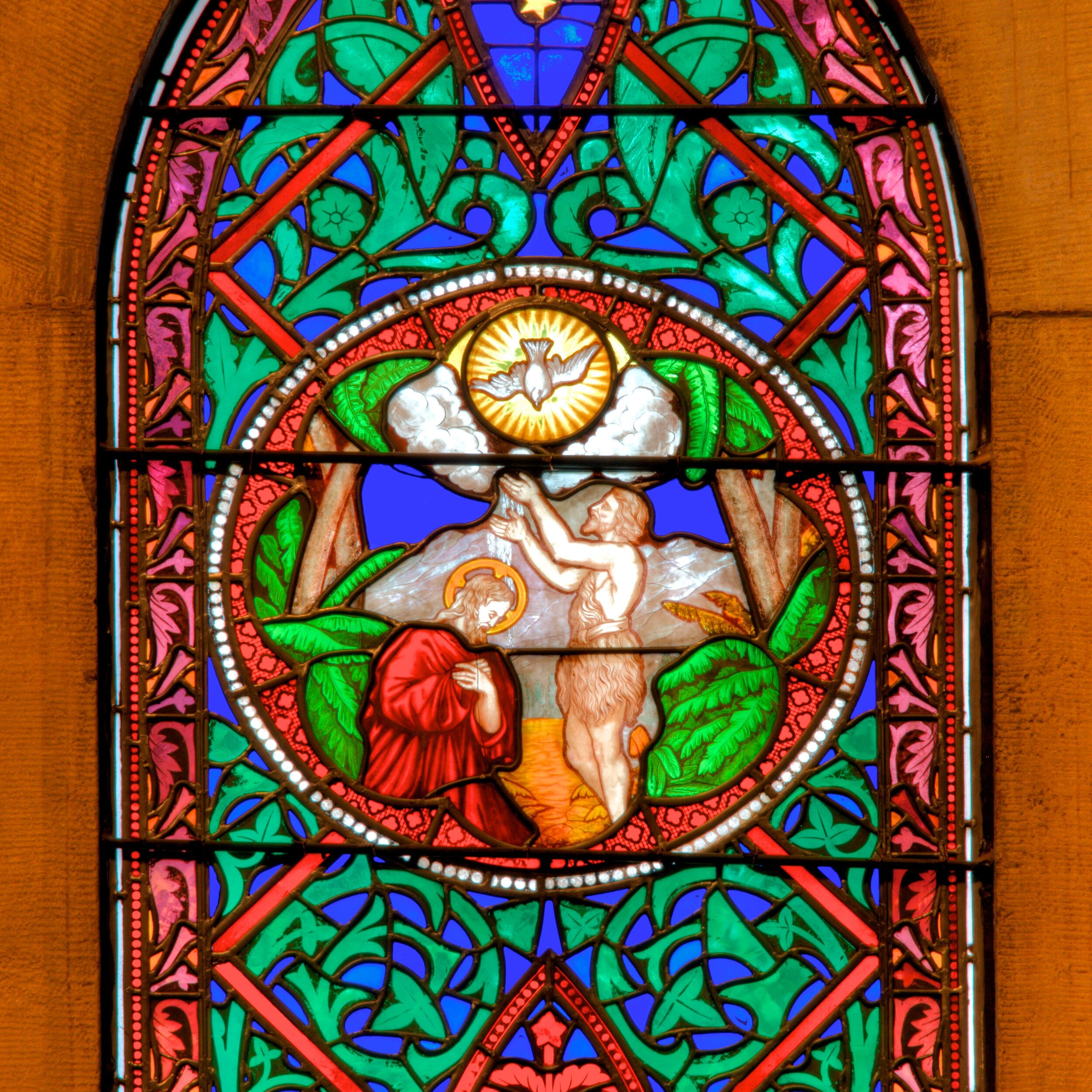
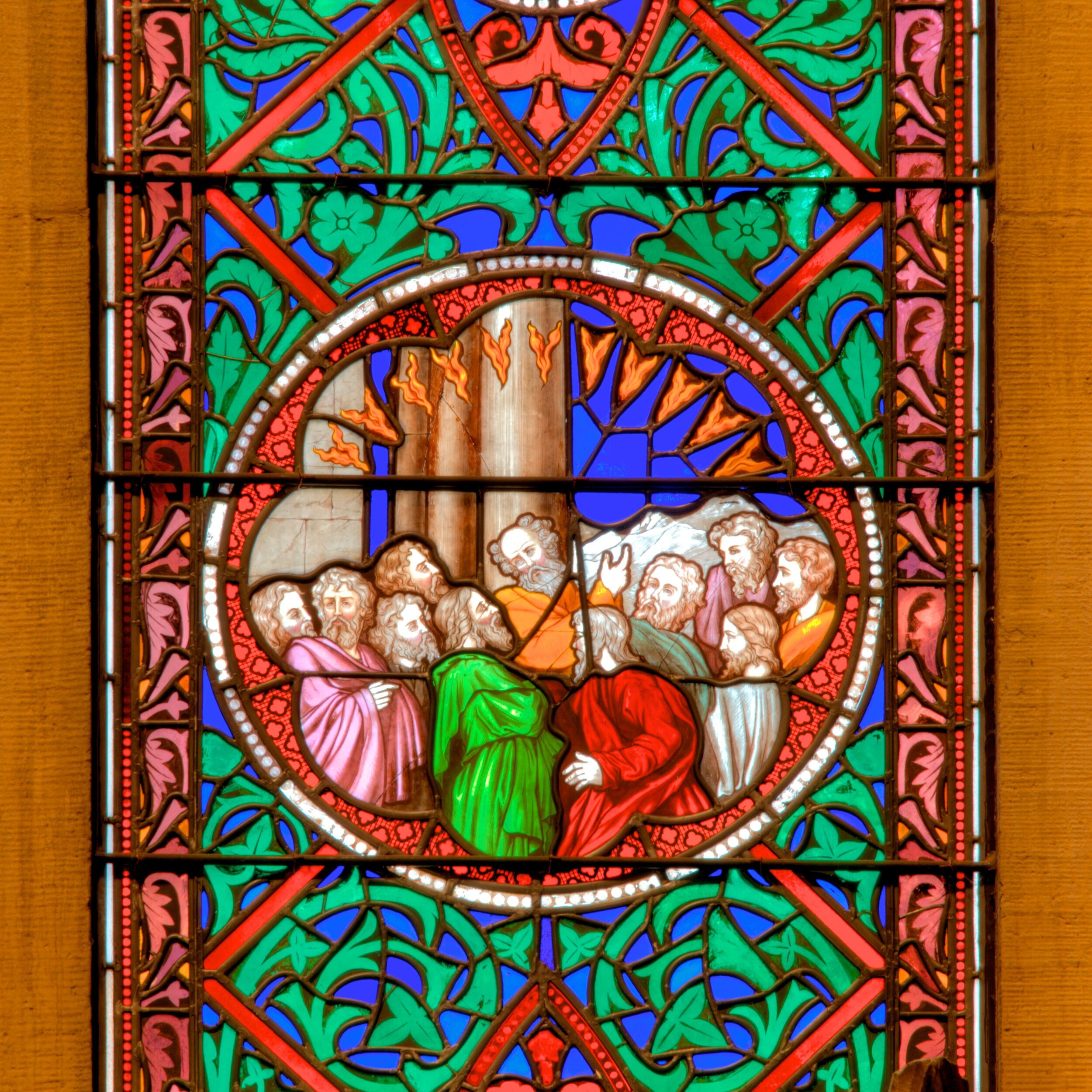
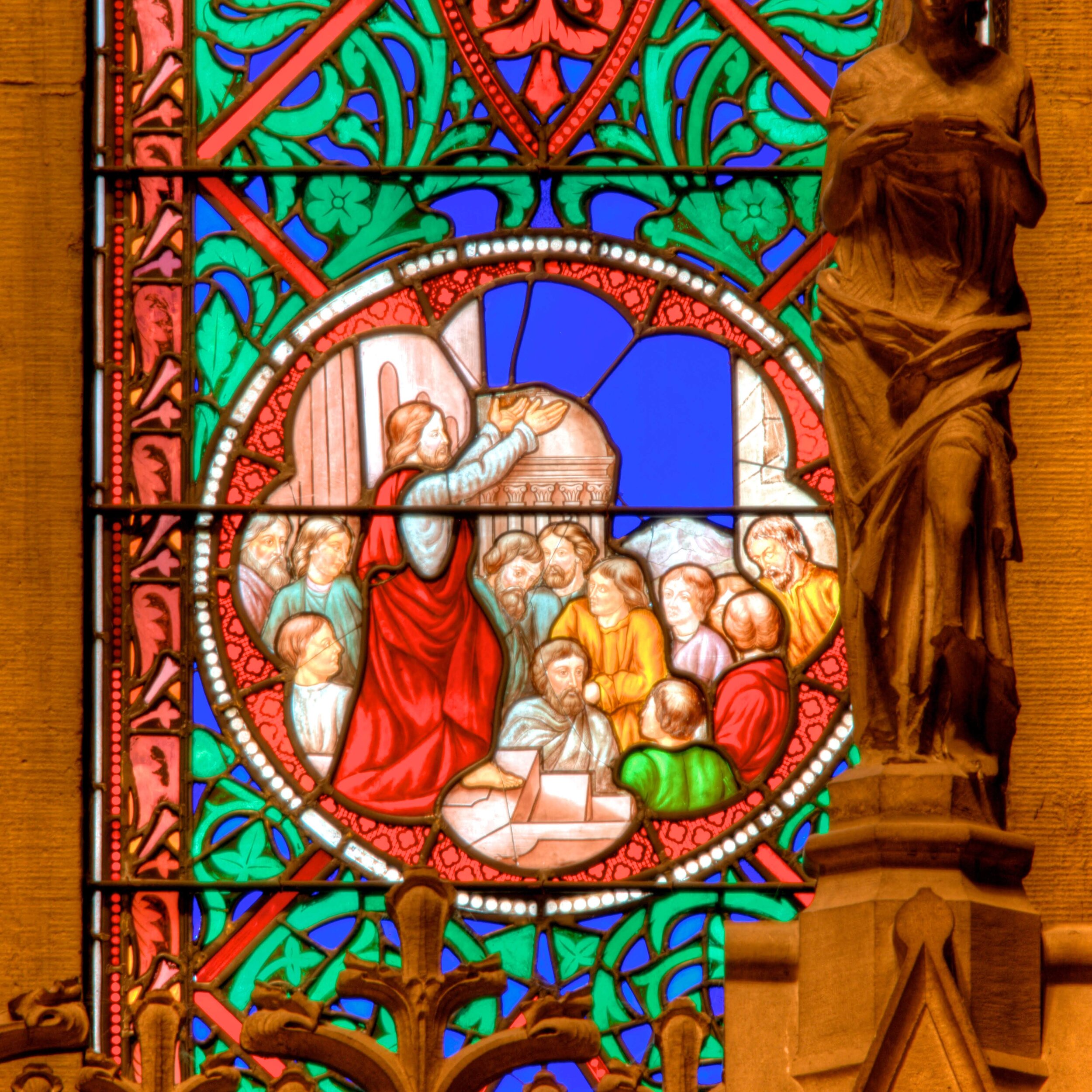
“In 1884, the parish received permission from the town to extend the front of the church to accommodate the new chancel. The new addition would be raised five steps from the floor of the church to provide a clearer view of the altar. No provision was made at the time of its construction for an organ or choir. The estimated cost of this chancel was $18,000. The money was to be raised, in part, from the sale of the old pews for, at the same time, the seating was remodeled and new pews placed on the main floor. The new Eucharist setting was enhanced by the installation of the handsome Trinity window above and behind the wooden reredos.
The Trinity windows is a five-light windows with rose tracery. The left light contains three small medallions showing phases of the Creation. The second light from the left contains two medallions showing the emblems of St. Marks and St. John, plus a hidden medallion showing the Chi Rho. The third light form the left contains three medallions: at the top, the Nativity, at the center the Crucifixion, and at the bottom, the Resurrection. The fourth light from the left contains two medallions showing the emblems of St. Mark and St. John, and a hidden medallion showing the Paschal Cross. The fifth light from the left contains three medallions: the baptism of Jesus, the Pentecost and, at the bottom, St. Paul on the Hill of Mars in Greece. These medallions are set upon a foliated background of vivid green against an ultramarine blue. A large rose window above at the top contains the emblem of th eTrinity with a Latin inscription. Two smaller rose windows below and to either side display the Alpha and Omega. Although the maker of this window is unknown, it is believed to be of either American or Belgian origin.”
…
In 1941, shortly after the arrival of C. Lawson Willard as rector, the Trinity window underwent some alteration. The lower medallion of the third light from the left was raised from its hidden position behind the new [stone] reredos. The middle medallion was raised at the same time, thus enabling the congregation to view, unobstructed those three major events in the life of Christ.
Here I Will Dwell (2012), Ed Getlein, ed. Neil Olsen & Ray Chappell, pg. 211, pg. 216
L. C. Tiffany Windows

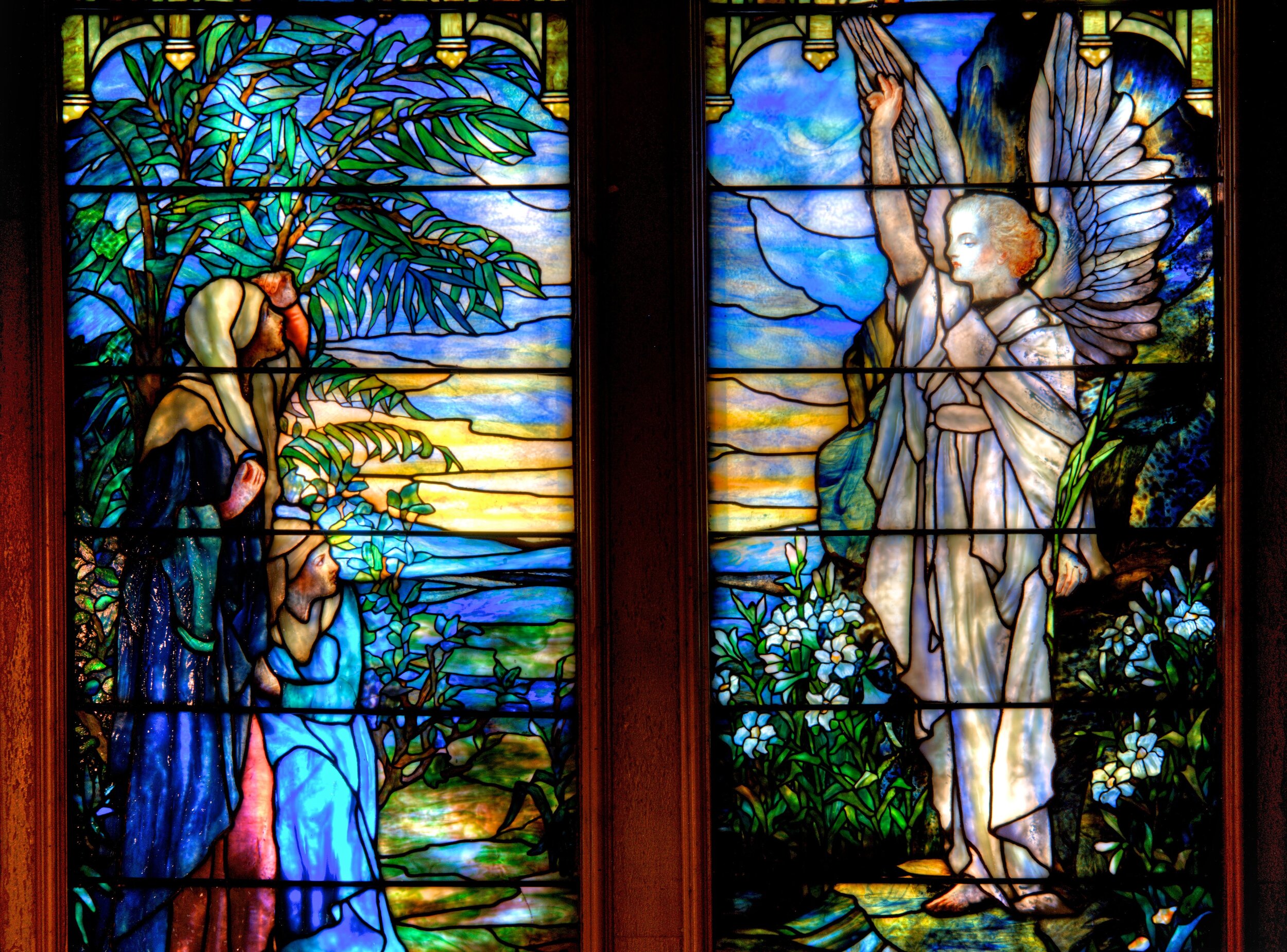
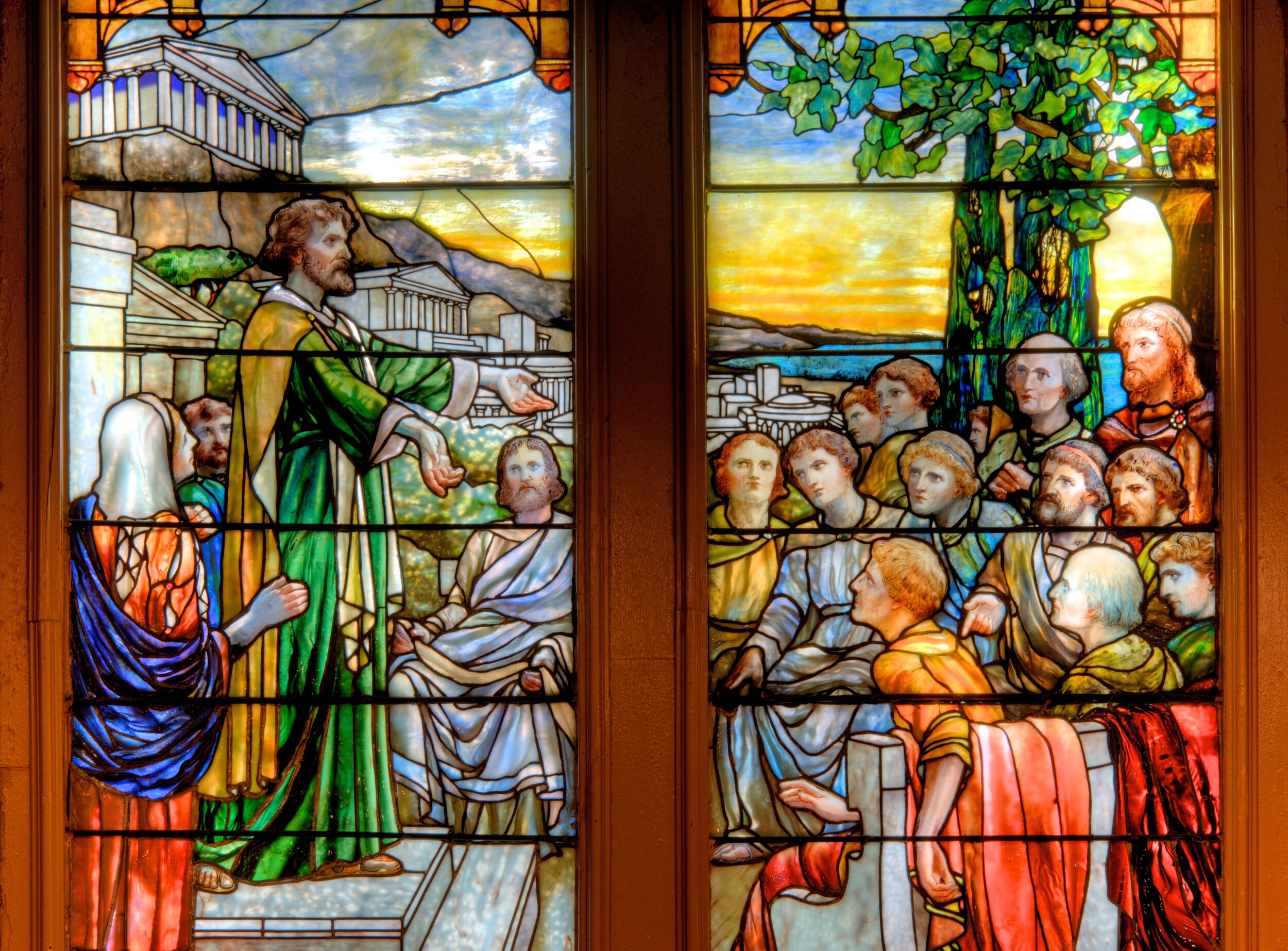
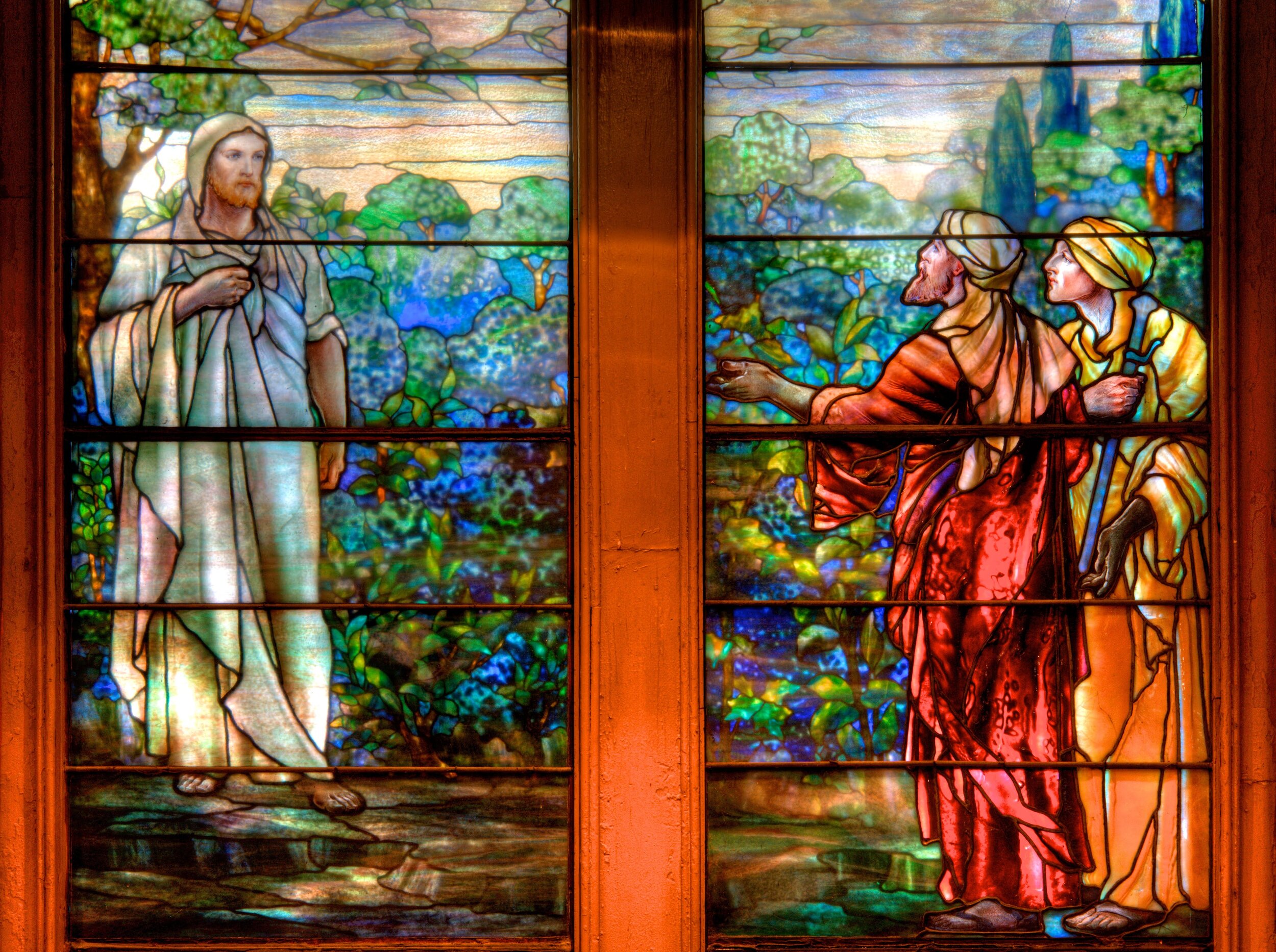
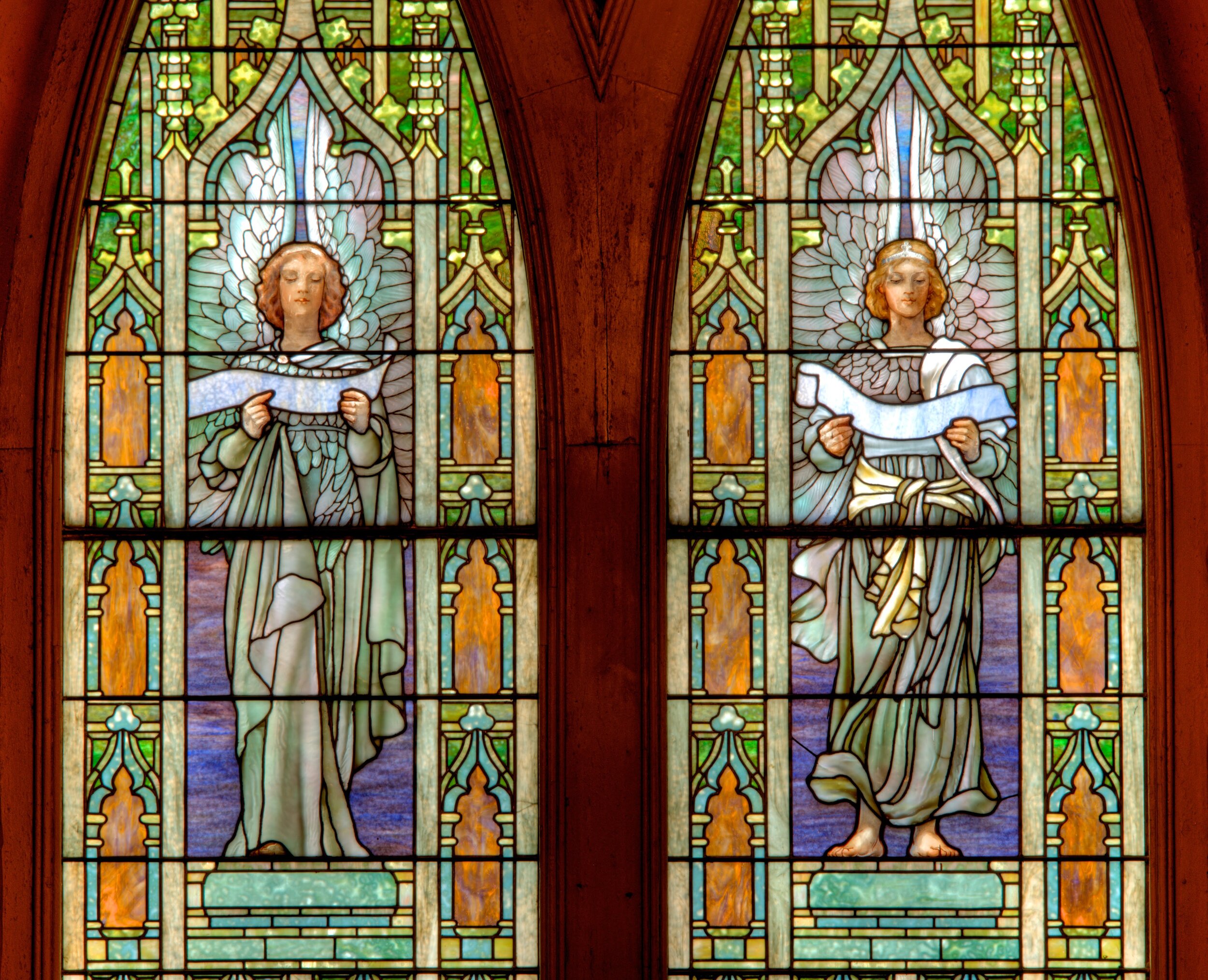
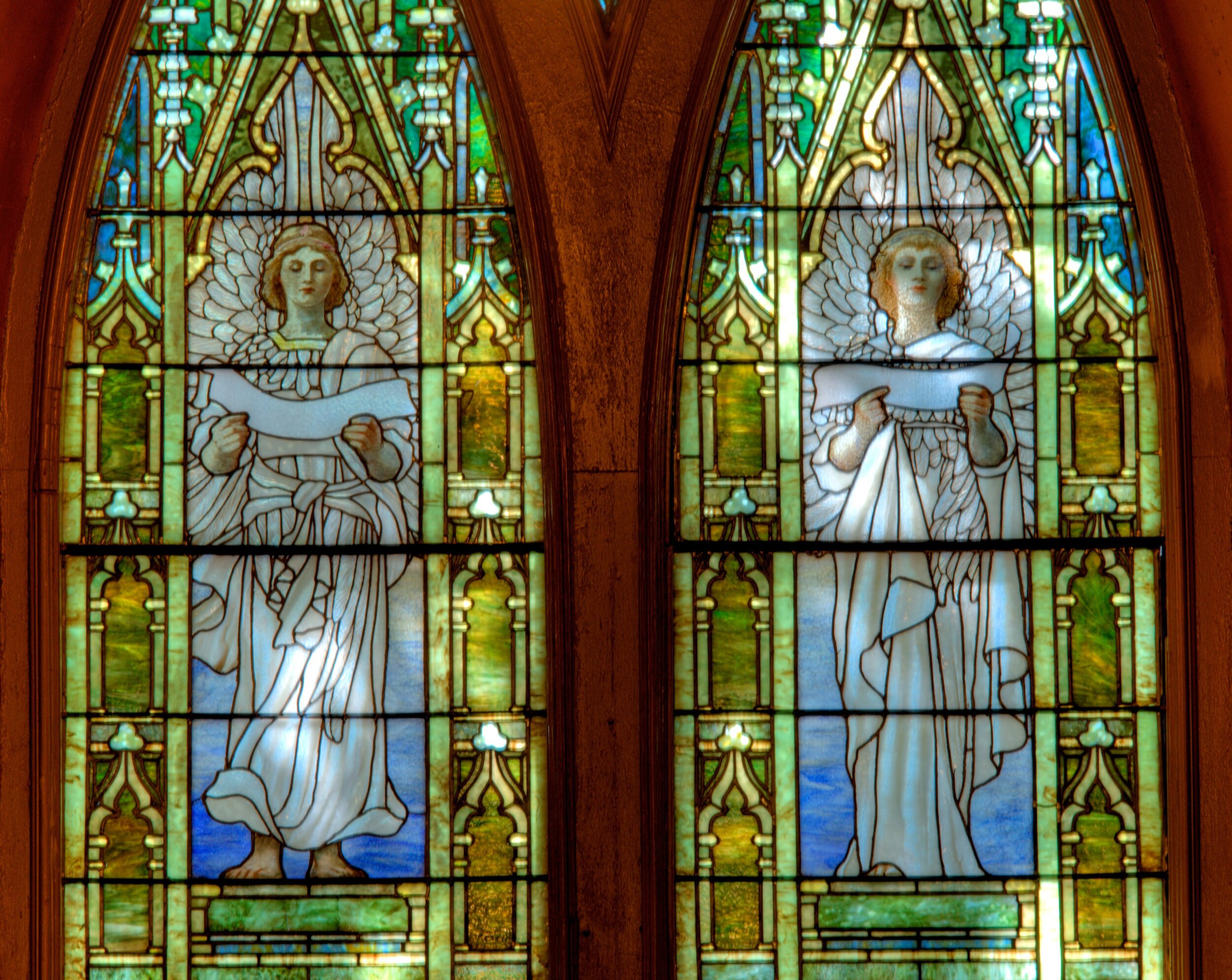
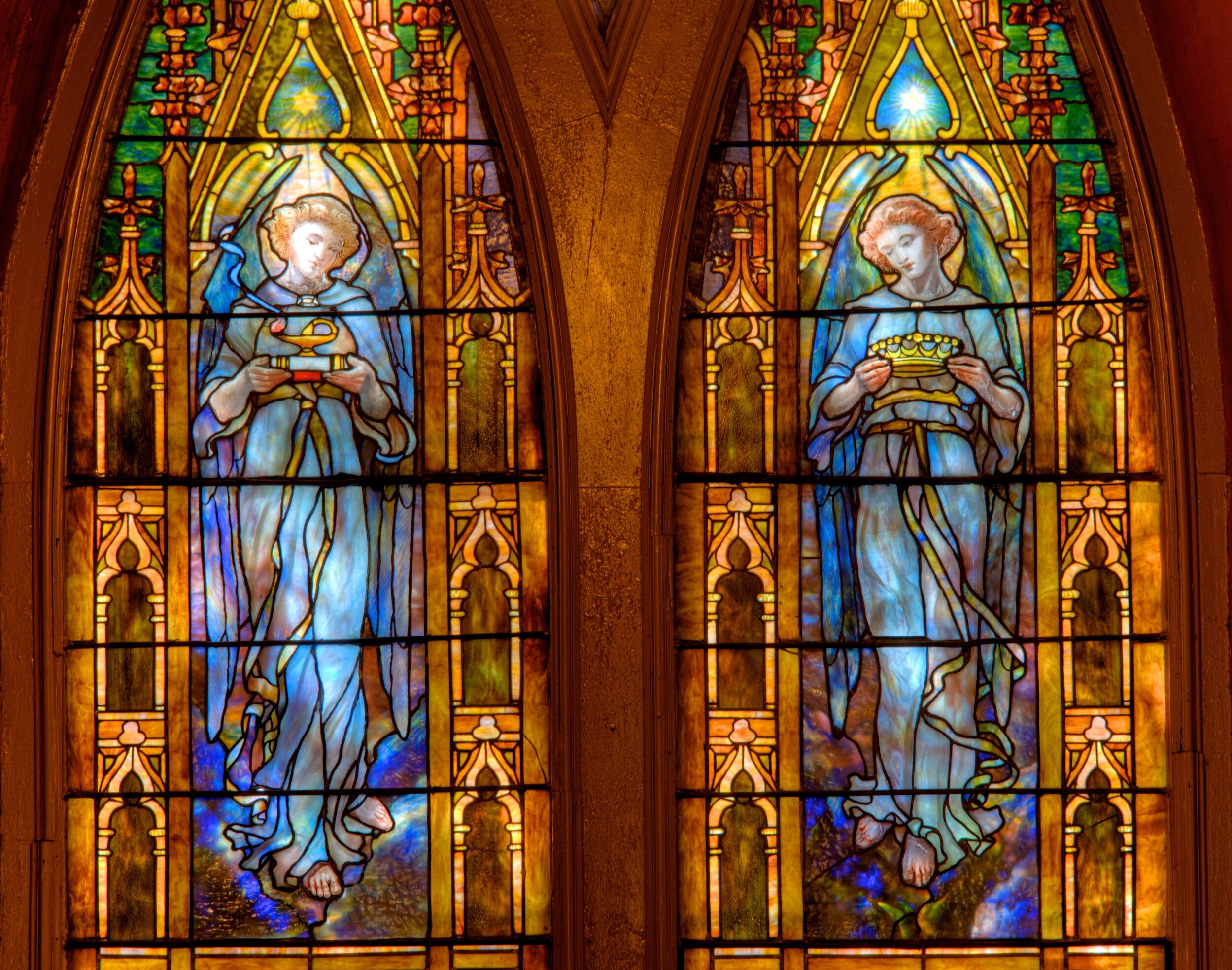
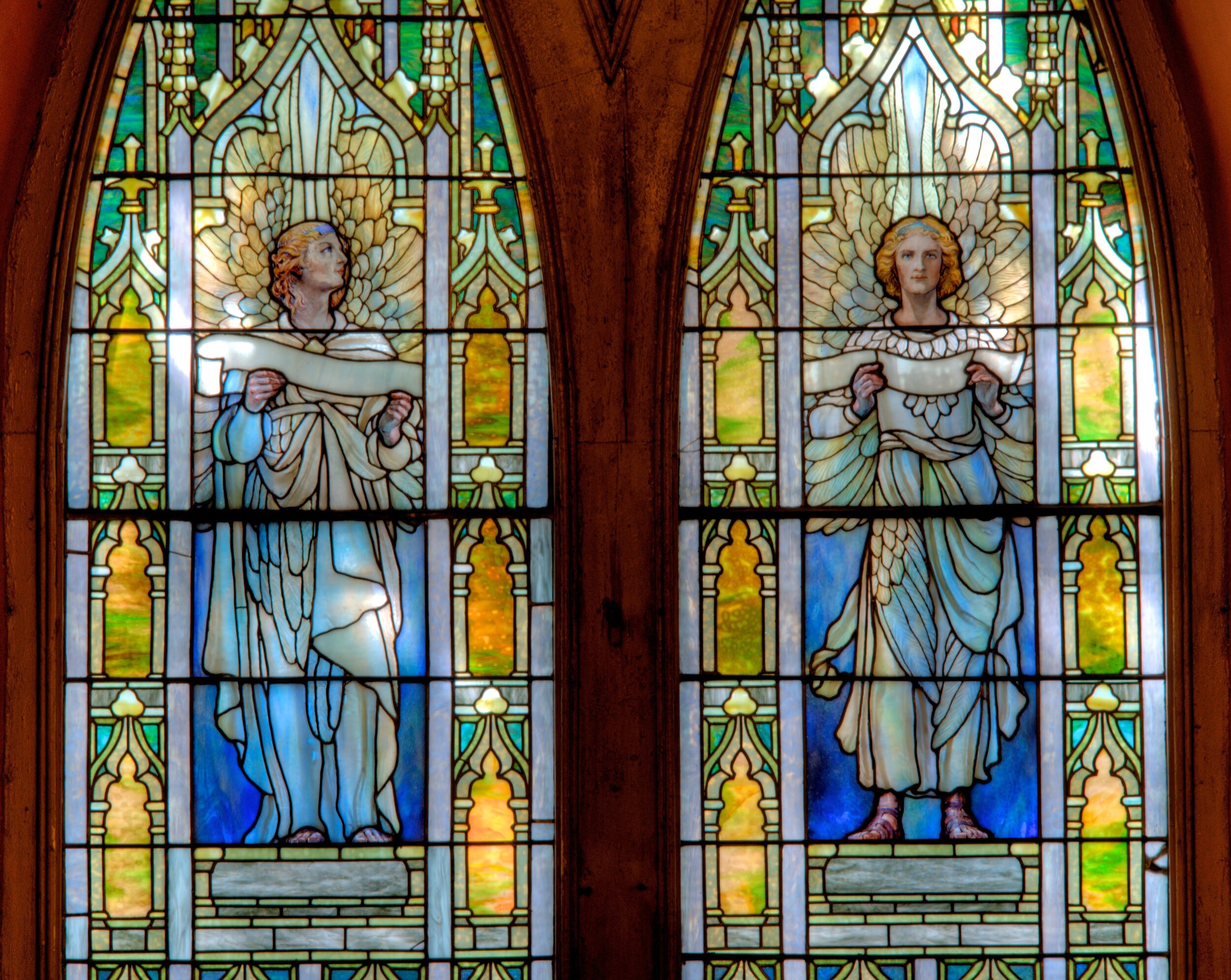
“In 1897 Mrs. Mary P. Wade gave the church a window in memory of William W. Boardman and Lucy H. Boardman. The window depicts St. Paul preaching on the Hill of Mars (Greece). Above the balcony two angels hold the lamp of Truth and the Crown of Reward. This window was placed second from the rear of the church on the Chapel Street side. It was made of opalescent glass by the L.C. Tiffany Company.
Another window was added on March 6, 1903. It was given by Amos F. Barnes and Frank G. Phipps in memory of their father and mother Thomas Atwater Barnes and Phoebe Bryan Barnes. Below the balcony is depicted Easter Morning Showing the angel and three Marys at the tomb. Above the balcony is tabernacle work with two angels bearing scrolls. (212-13)
...
On December 24, 1910 a window in memory of the Rev. Edwin Harwood, rector from 1859-1894, was placed at the rear of the church on the Chapel Street side. It was made of opalescent glass by the L. C. Tiffany Company and was of Wilson design. The window depicts, below the balcony, Christ meeting the disciples on the Road to Emmaus. The Christ figure is particularly interesting for its ethereal, almost ghostly quality. Above the balcony are the familiar angels bearing scrolls.
...
November 10, 1912 saw the installation of yet another new window, this time on the north side of the church, second from the front. IT was given by the Rev. Nathaniel Garfield as a memorial to his wife, Harriet Clark Garfied. It was of Wilson design, constructed by L. C. Tiffany of opalescent glass. Below the balcony is the Adoration of the Magi. Angels with scrolls are above.”
Here I Will Dwell (2012), Ed Getlein, ed. Neil Olsen & Ray Chappell, pg. 212-213
Grisaille Windows
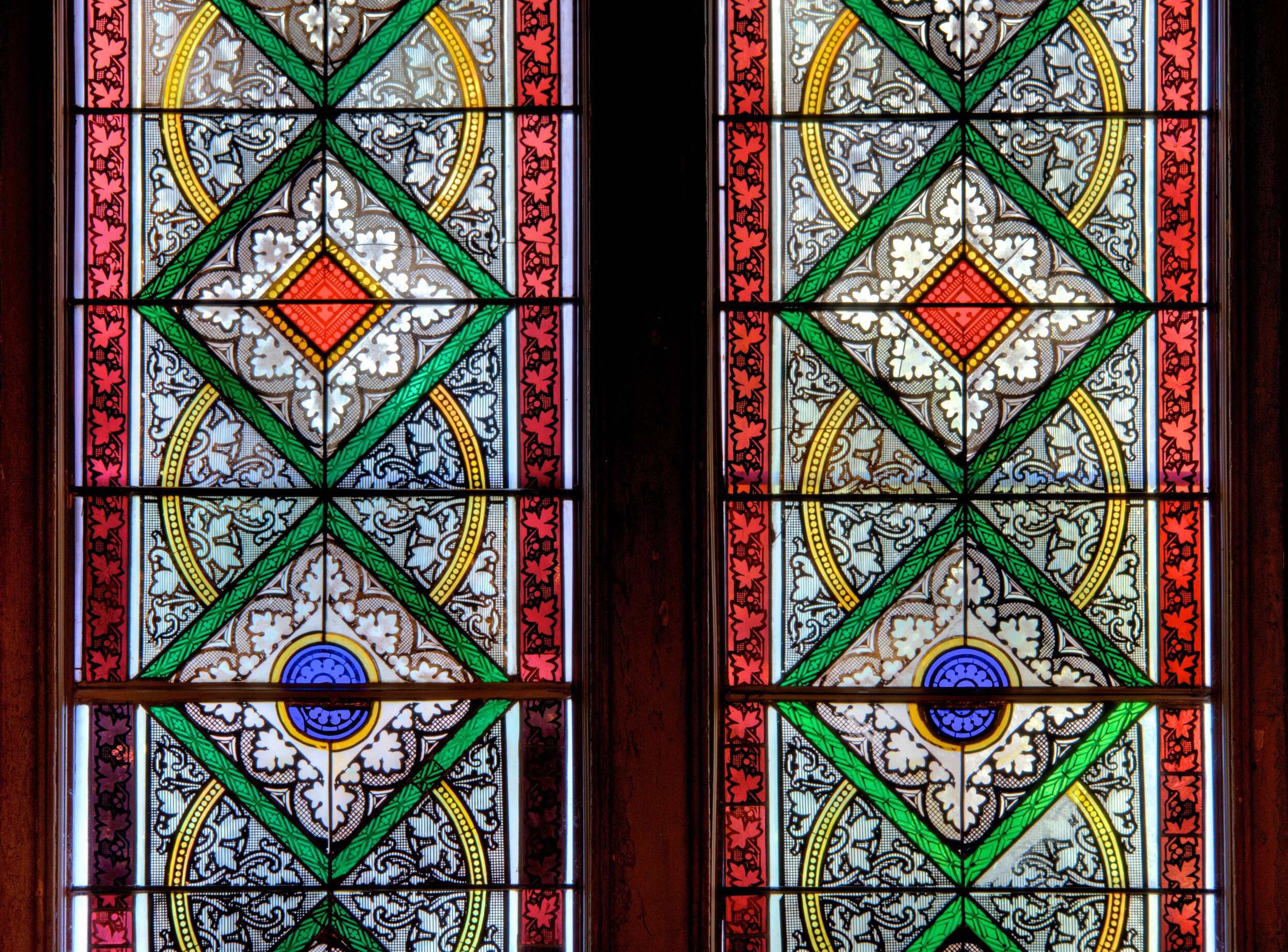
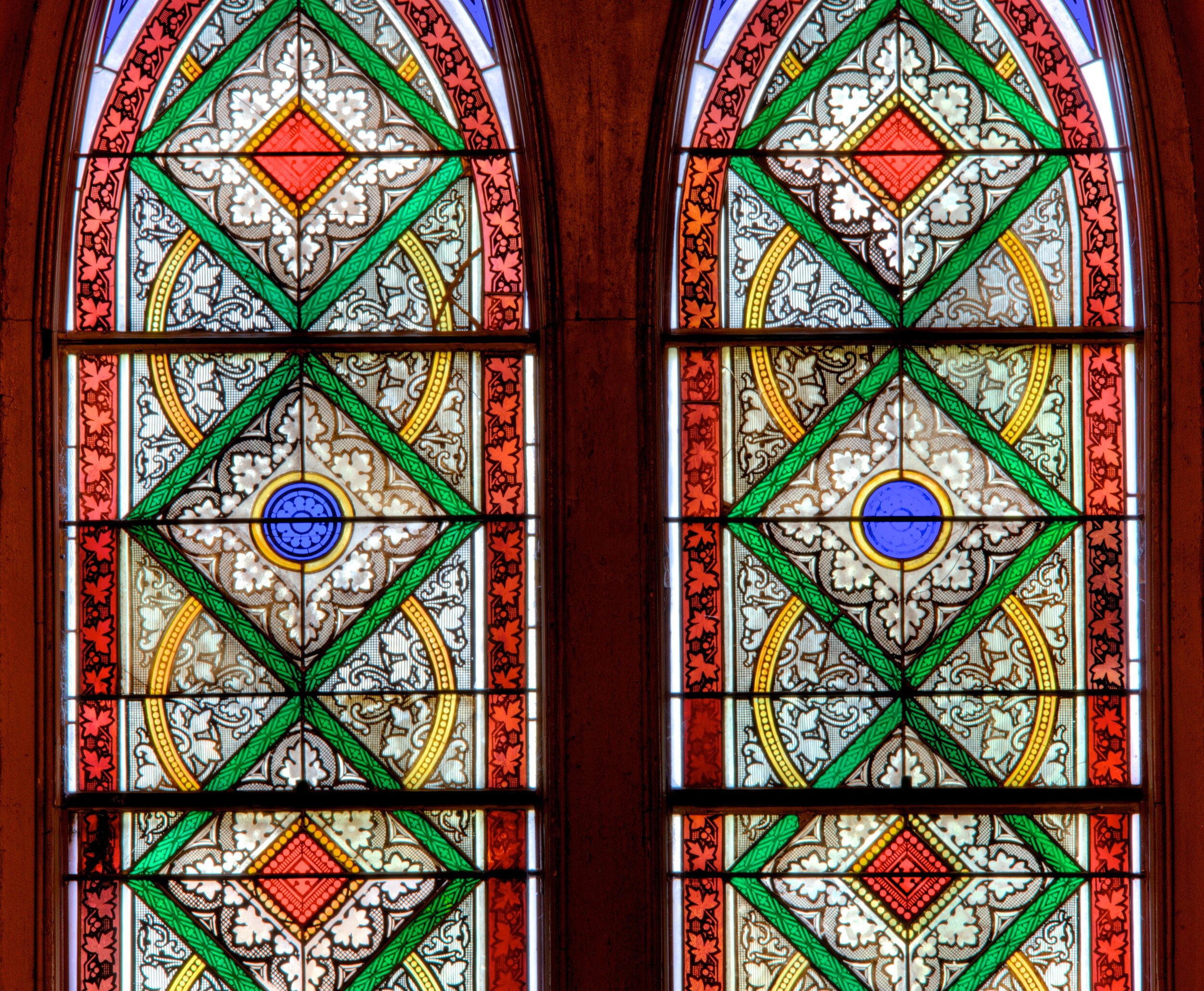

“Although the church building had, from time to time, been renovated, such activities were pretty well confined to repairs, painting and decoration, excepting the major interior decorating job of 1846. In 1871, however, the first step was taken toward a much more spectacular change in the ambience of Trinity, and one which would eventually prove to be one of the building’s abiding glories. The Annual Parish Meeting of that year authorized the Vestry to change all the windows to stained glass, at “a cost not to exceed $2000.” William B. Trowbridge, a newly elected vestryman, together with Messrs. Tuttle, Chornley and the Rector, comprised a committee to oversee the operation. What they had in mind, of course, were the simple grisaille windows with a design stenciled on the glass, two or three examples of which remain in the church today. “
Here I Will Dwell (2012), Ed Getlein, ed. Neil Olsen & Ray Chappell, pg. 105-106
D’Ascenzo Windows
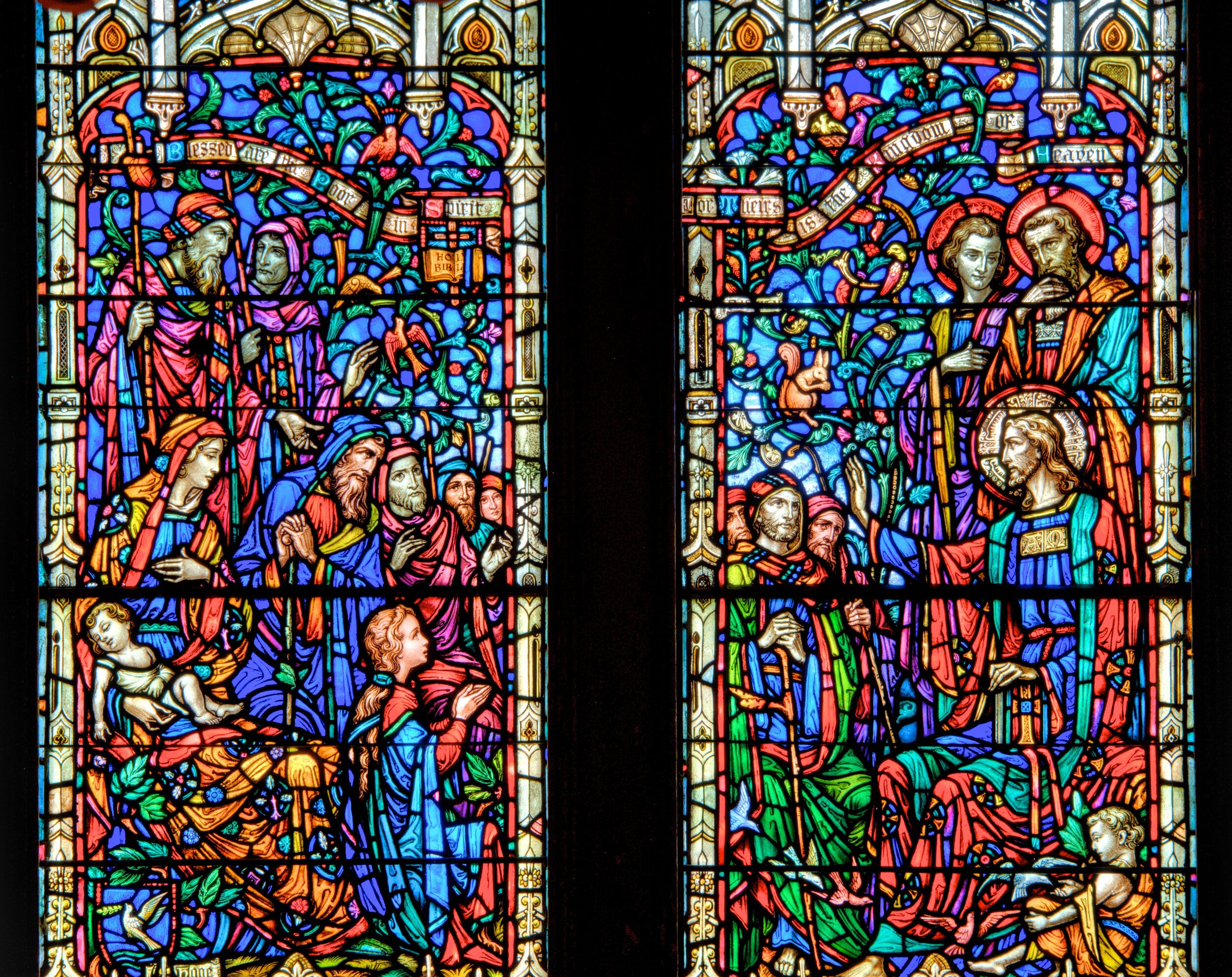
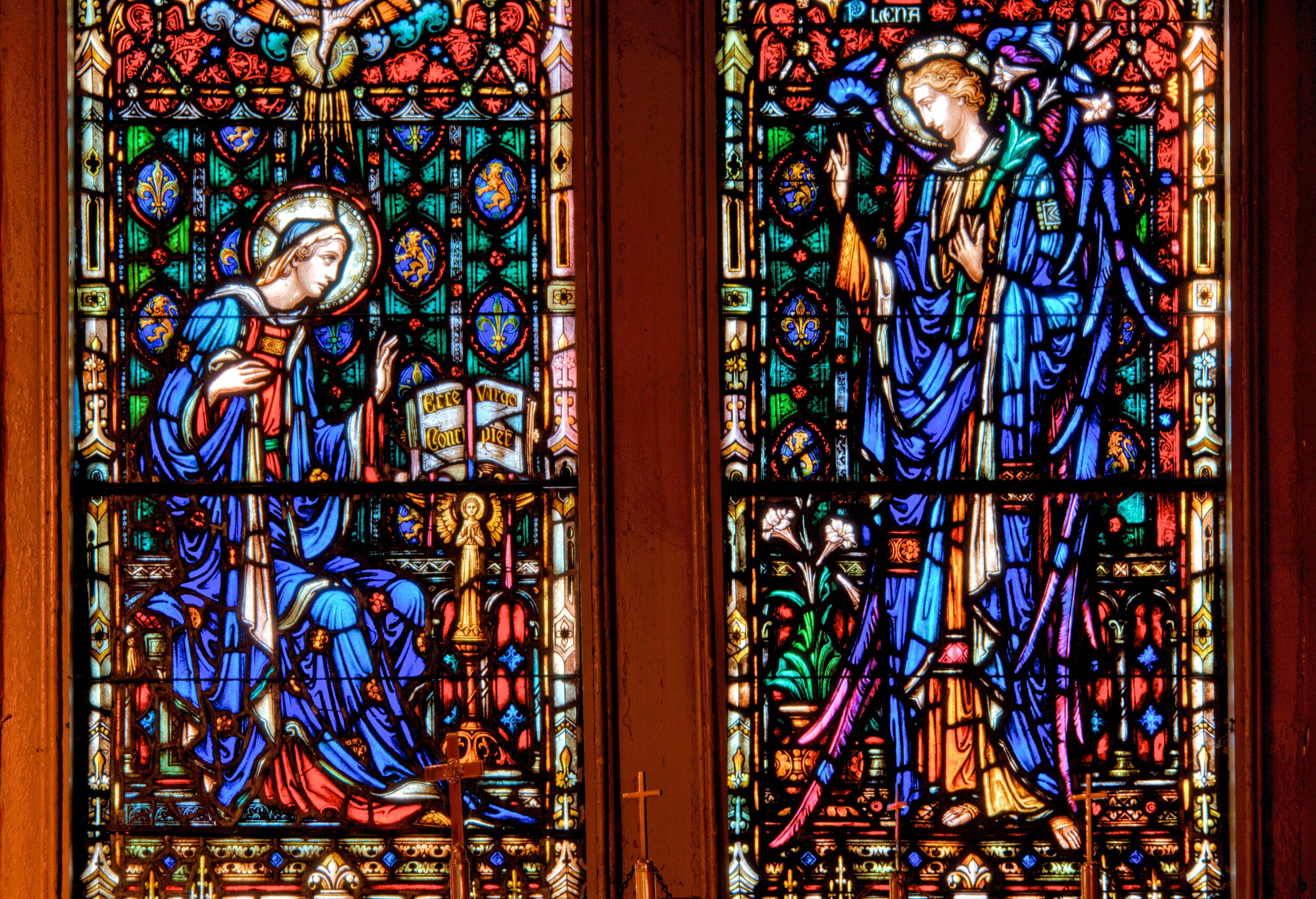
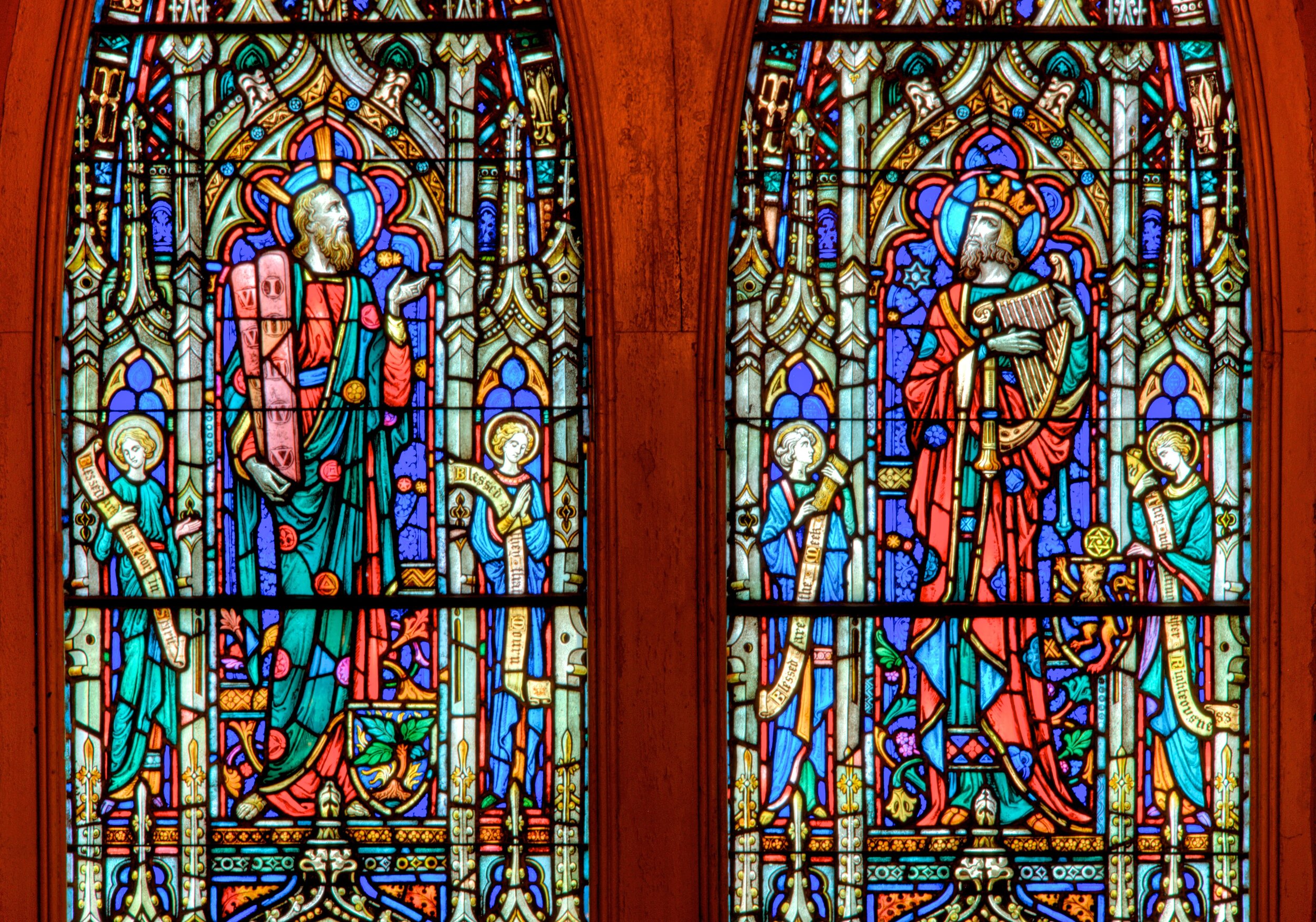
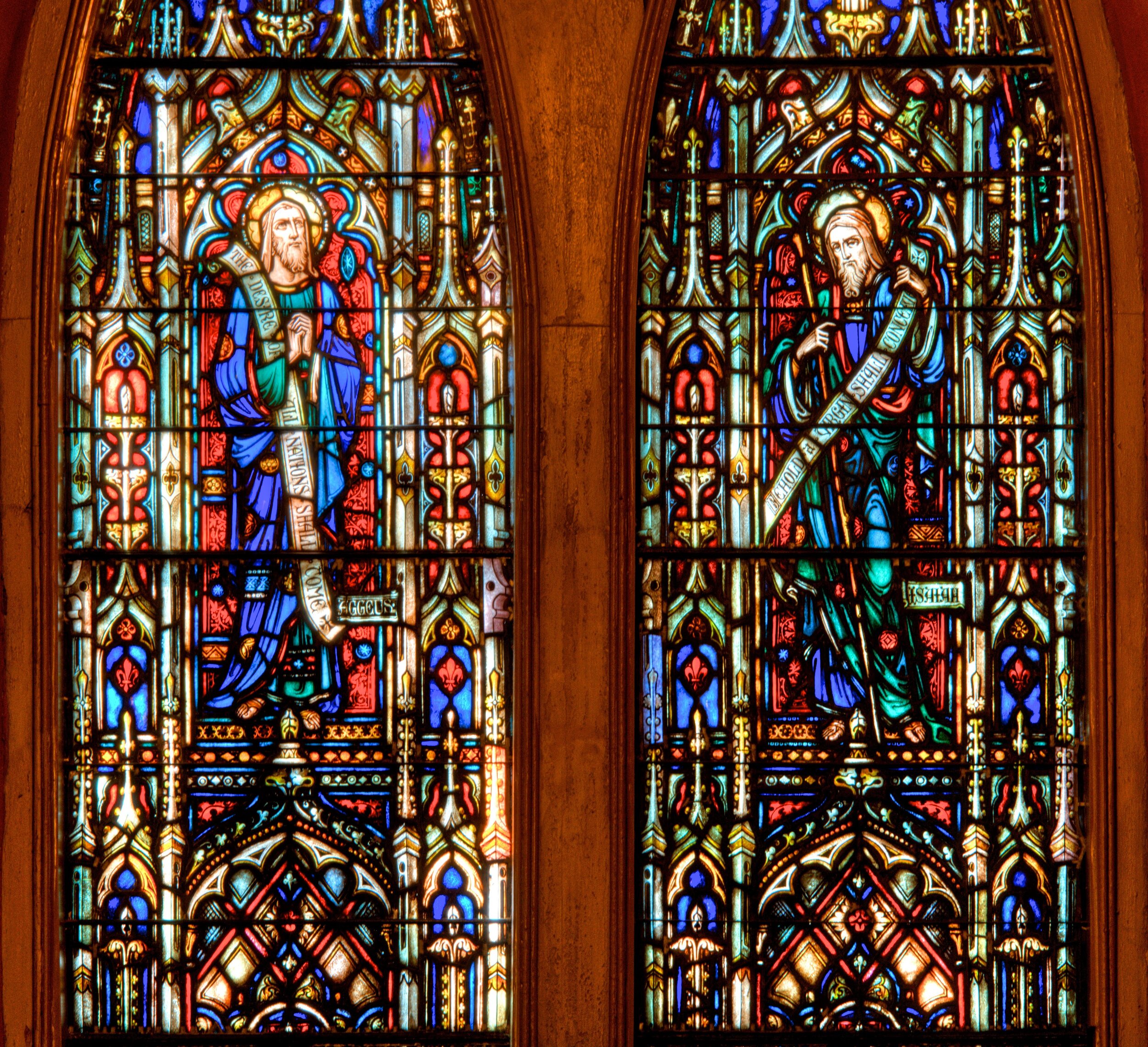
“The years 1926 and 1927 brought two more windows but of quite a different type. They were painted rather than opalescent glass and drew their inspiration from the master glassmakers of the fourteenth century, both in design color. Both were designed by D’Ascenzo of Philadelphia. They are placed nearest the chancel, one on the Gospel side and one on the Epistle side of the church. The first of this paire depicts the Sermon on the Mount on the below-balcony panel. Above the balcony are two standing figures: David the Psalmist and Moses the Lawgiver. Each figure, in addition, is represented by symbols: the burning bush for Moses and the Lion of Judah for David. This window was installed on the north side of the church, fourth from the rear, on June 11, 1926 in memory of the Hon. A. Heaton Robertson by his family.
The remaining window of this pair depicts the Angel Gabriel announcing his tidings to the Blessed Virgin Mary. Above the balcony are the prophets Isaiah and Haggai, both holding ribbons. This window was installed on May 13, 1927 on the Chapel Street side, fourth from the rear, in accordance with a legacy left by Miss Ennes G. Howey in memory of her father, mother and sister: Matthew and Sarah Howey and Emily Howey Garwood.”
Here I Will Dwell (2012), Edward Getlein, ed. Neil Olsen & Ray Chappell, pg. 213-214
The Holy Family Window - Charles J. Connick & Associates
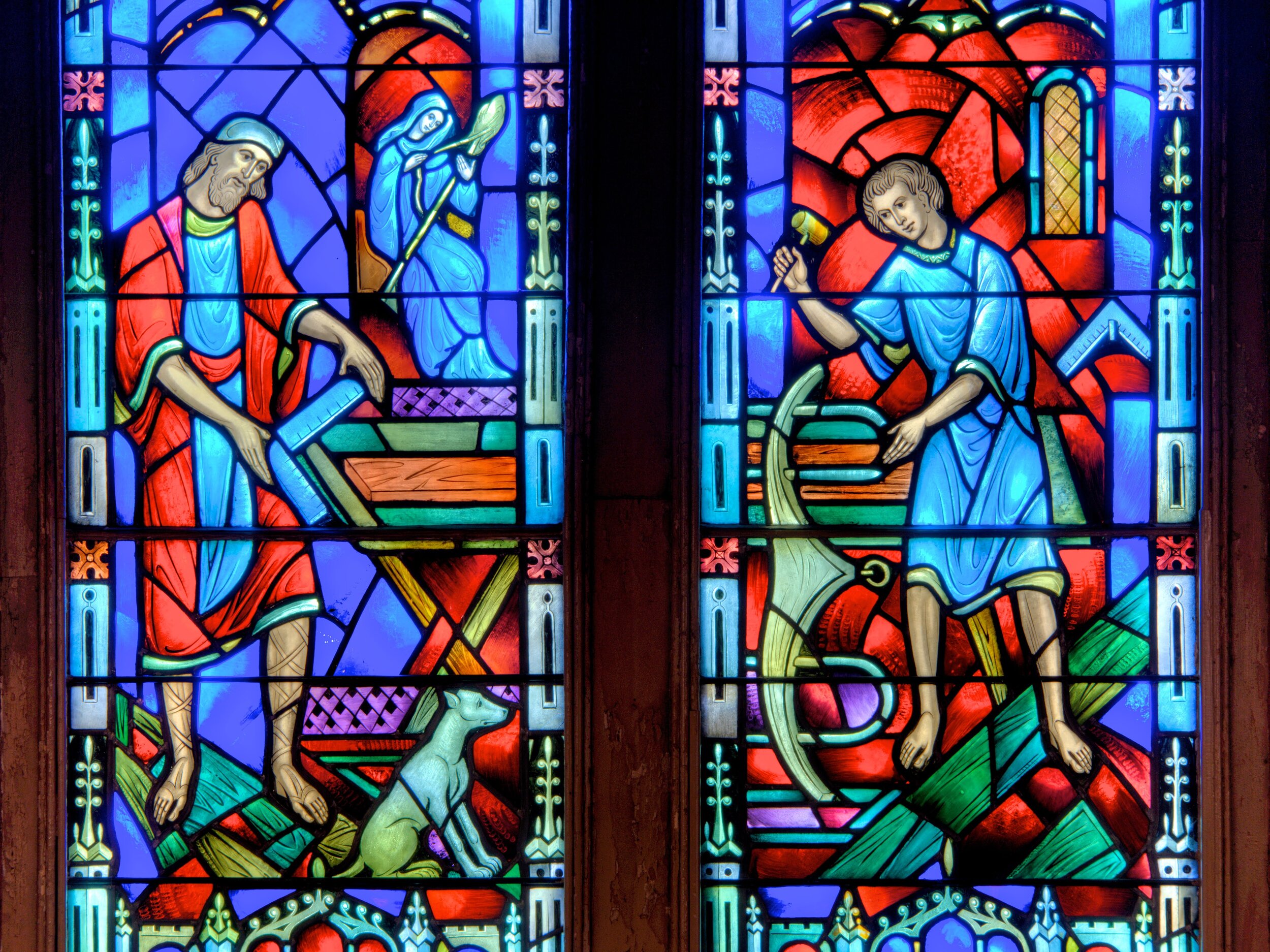
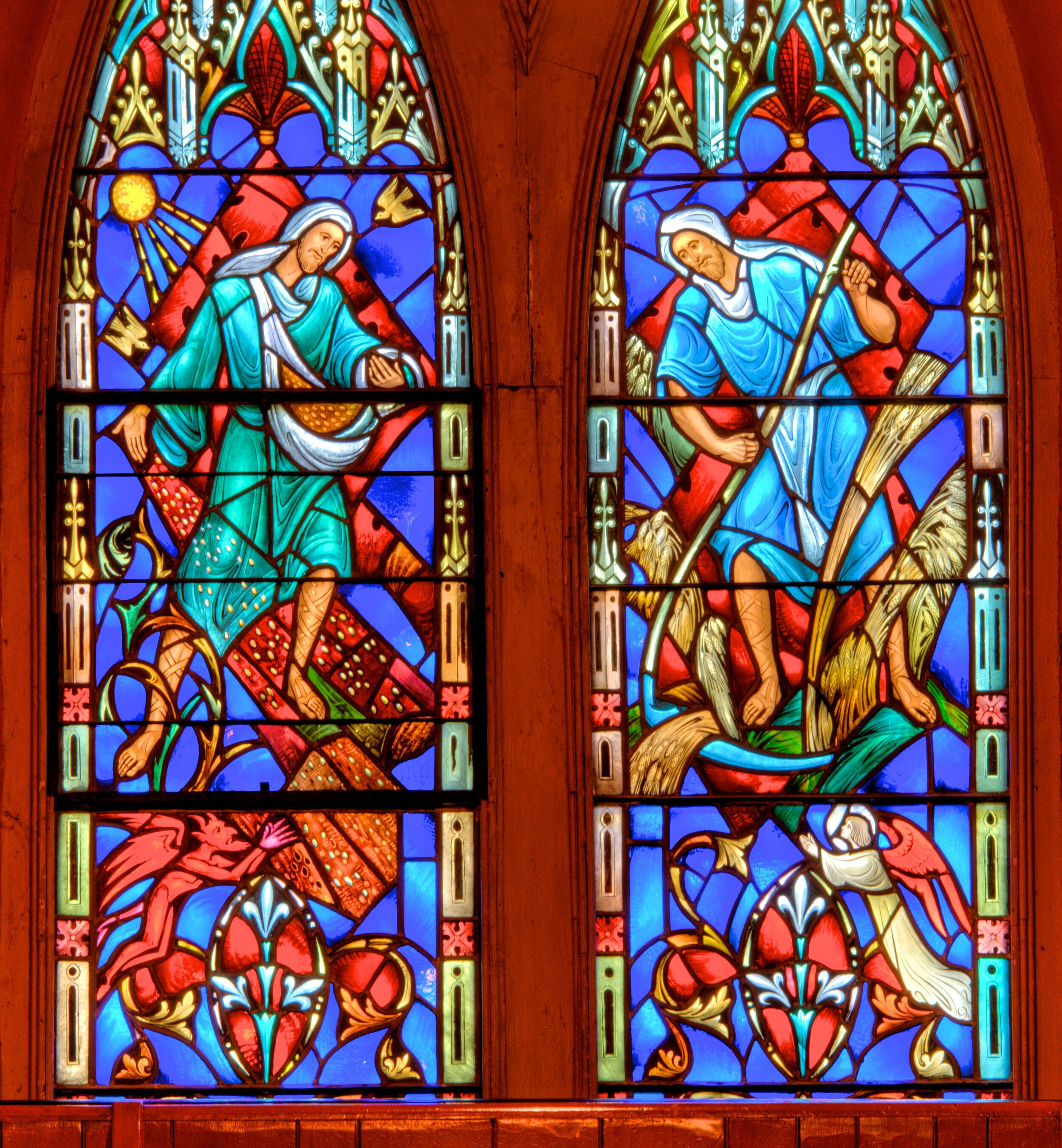
Installed in 1968, "The Holy Family Window" was donated by the family of Frederick Foster Brewster, a noted local philanthropist whose ancestors were active in the carriage industry that flourished in New Haven in the 19th century. This window remained Trinity's newest for thirty-four years until the 250th Anniversary window was installed over the narthex doorway in 2002. It differs from the others both in its striking order and simplicity as well as the unusual clarity of its colors.
The Holy Family window is in two halves. The section below the balcony depicts Jesus, Mary and Joseph at work. The window depicts the complementary scenes of St. Joseph working with a carpenter's square while Mary sits spinning cotton. The boy Jesus is shown fashioning a double ox bow, recalling Matthew 11:29, "Take my yoke upon you and learn from me, for I am gentle and humble in heart, and you will find rest for your souls." The upper half of the window depicts the parable of the Sower, found in the Gospels of Matthew, Mark and Luke. In the left-hand lancet, a nasty-looking devil stands ready to snatch up the seed (representing the Word of God) before it can sprout; in the right-hand lancet, an angel guards the seed so that it can take root in the souls of God's children.
The Holy Family window was created by Charles J. Connick Associates, successors to the studio founded in 1918 by Charles J. Connick (1875-1945). By the time the Boston studio closed forever in 1986, due to the aging of its workers and the reduction of natural light brought about by the high-rise buildings surrounding Copley Square, it had created distinguished windows for more than 5,000 churches, schools and hospitals the world over, including the largest stained- glass window in America, the great 10,000-piece Rose Window over the West Door of the Cathedral of St. John the Divine in New York City. Charles J. Connick once remarked, "If churches are made radiant and beautiful places of worship, we can have a spiritual regeneration without anyone knowing what is going on. Beauty can preach as very few men with bundles of words can preach. I want to make beautiful interiors for both churches and souls. I want to hear my windows singing."
Commentary submitted by Joe Dzeda.
